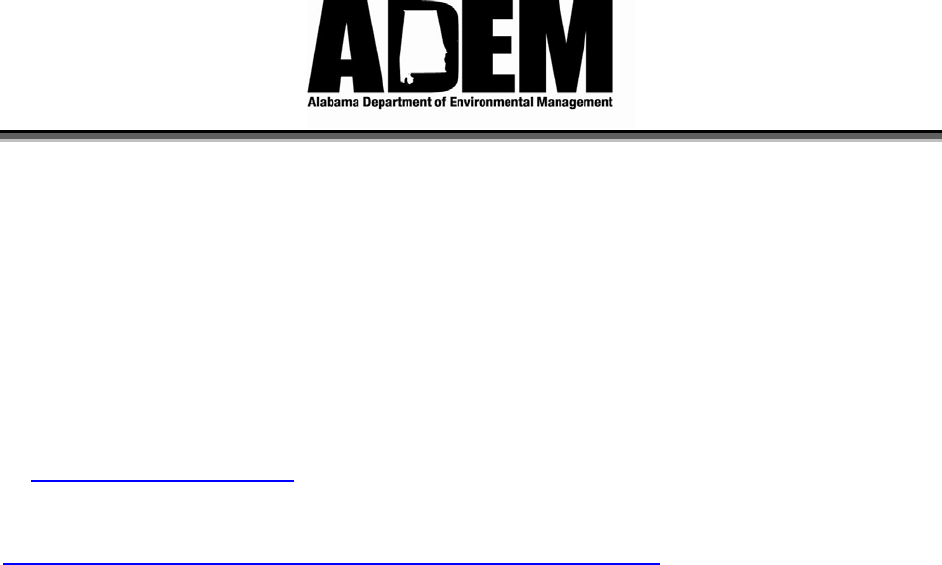
Construction Best Management Practices Plan (CBMPP)
Instructions
To help you develop the narrative section of your construction site CBMPP, the
Alabama Department of Environmental Management (ADEM) has created this
electronic CBMPP template. The template is designed to help guide you through the
CBMPP development process and help ensure that your CBMPP addresses all the
necessary elements for a complete application. You should use this template (available
at www.adem.alabama.gov) with the Alabama Handbook for Erosion Control, Sediment
Control and Stormwater Management on Construction Sites and Urban Areas June
2003 (Revised 03/09). The handbook is available at
http://swcc.alabama.gov/pages/erosion_control.aspx?sm=b_b.
You are required by ADEM Admin. Code r. 335-6-12-.21(2) to develop a CBMPP which
reflects the requirements of 335-6-12, as well as the conditions at your site. This
template is intended to be used as a guide in development of your site’s CBMPP, thus it
should be customized for your site.
Using the CBMPP Template
Each section of this template includes “instructions” and space for project information.
You should read the instructions for each section before you complete that section. This
template is available in Word format if requested. The header can be customized to
allow you to insert your own company logo. Some sections may require only a brief
description while others may require several pages of explanation.
Tips for completing the CBMPP template
• Modify this CBMPP template so that it addresses the requirements of ADEM
Admin. Code chapter 335-6-12 and meets the needs of your project. Consider
adding rule citations in the CBMPP when you address a specific rule
requirement(s).

CBMPP Template, Version 1.1, September 2009 i
Construction Best Management Practices Plan
for:
Insert Project Name
Insert Project Site Location/Address
Insert City, State, Zip Code
Insert Project Site Telephone Number (if applicable)
Operator:
Insert Company or Organization Name
Insert Name
Insert Address
Insert City, State, Zip Code
Insert Telephone Number
Insert Fax/Email
CBMPP Contact(s) / QCP:
Insert Company or Organization Name
Insert Name
Insert Address
Insert City, State, Zip Code
Insert Telephone Number
Insert Fax/Email
CBMPP Preparation Date:
__ __ / __ __ / __ __ __ __
Estimated Project Dates:
Project Start Date:
__ __ / __ __ / __ __ __ __
Project Completion Date: __ __ / __ __ / __ __ __ __

Construction Best Management Practices Plan (CBMPP)
INSERT PROJECT NAME and DATE
CBMPP Template, Version 1.1, September 2009 ii
Contents
SECTION 1: SITE EVALUATION, ASSESSMENT, AND PLANNING ............................................................1
1.1 Project/Site Information.....................................................................................................1
1.2 Contact Information/Responsible Parties..........................................................................2
1.3 Nature and Sequence of Construction Activity..................................................................3
1.4 Soils, Slopes, Vegetation, and Current Drainage Patterns ...............................................4
1.5 Pre- and Post- Construction Site Estimates ......................................................................5
1.6 Receiving Waters ..............................................................................................................7
1.7 Site Features and Sensitive Areas to be Protected...........................................................8
1.8 Potential Sources of Pollution ...........................................................................................8
1.9 Endangered Species.........................................................................................................9
1.10 Historic Preservation .........................................................................................................9
1.11 Applicable Federal, State or Local Programs....................................................................9
1.12 Maps ...............................................................................................................................10
SECTION 2: EROSION AND SEDIMENT CONTROL BMPS........................................................................11
2.1 Minimize Disturbed Area .................................................................................................12
2.2 Phase Construction Activity.............................................................................................12
2.3 Control Stormwater Flowing onto and through the Project..............................................13
2.4 Stabilize Soils..................................................................................................................14
2.5 Stabilize Slopes...............................................................................................................15
2.6 Protect Storm Drain Inlets ...............................................................................................16
2.7 Establish Perimeter Controls and Sediment Barriers ......................................................17
2.8 Retain Sediment On-Site.................................................................................................18
2.9 Establish Stabilized Construction Exits ...........................................................................19
2.10 Additional BMPs..............................................................................................................20
SECTION 3: GOOD HOUSEKEEPING (GROUNDS KEEPING) BMPS........................................................21
3.1 Material Handling and Waste Management ....................................................................22
3.2 Establish Proper Building Material Staging Areas...........................................................23
3.3 Designate Washout Areas...............................................................................................24
3.4 Establish Proper Equipment/Vehicle Fueling and Maintenance Practices......................25
3.5 Control Equipment/Vehicle Washing...............................................................................26
3.6 Spill Prevention, Control and Management.....................................................................27
3.7 Any Additional BMPs.......................................................................................................27
3.8 Non-Stormwater Discharge Management .......................................................................28
SECTION 4: SELECTING POST-CONSTRUCTION BMPs...........................................................................29
SECTION 5: INSPECTIONS..........................................................................................................................31
5.1 Inspections ......................................................................................................................31
5.2 Delegation of Authority....................................................................................................32
5.3 Corrective Action Log......................................................................................................32
SECTION 6: RECORDKEEPING AND TRAINING........................................................................................33
6.1 Recordkeeping ................................................................................................................33
6.2 Log of Changes to the CBMPP .......................................................................................33
6.3 Training ...........................................................................................................................34
SECTION 7: FINAL STABILIZATION............................................................................................................35
SECTION 8: CERTIFICATION AND NOTIFICATION....................................................................................36
CBMPP APPENDICES ..................................................................................................................................37

Construction Best Management Practices Plan (CBMPP)
INSERT PROJECT NAME and DATE
CBMPP Template, Version 1.1, September 2009 iii
Appendix A – General Location Map
Appendix B – Site Maps
Appendix C – NOR and Acknowledgement Letter from ADEM
Appendix D – Inspection Reports
Appendix E - Sample Worksheet (see Part 1.5, calculating pre- and post-construction
runoff volumes)
Appendix F – Corrective Action Log (or in Part 5.3)
Appendix G – CBMPP Amendment Log (or in Part 6.2)
Appendix H – Grading and Stabilization Activities Log (or in Part 6.1)
Appendix I – Training Log (Optional)
Appendix J – Delegation of Authority
Appendix K – Additional Information (i.e., Endangered Species, Historic Preservation
and U.S. Corps of Engineers Documentation)
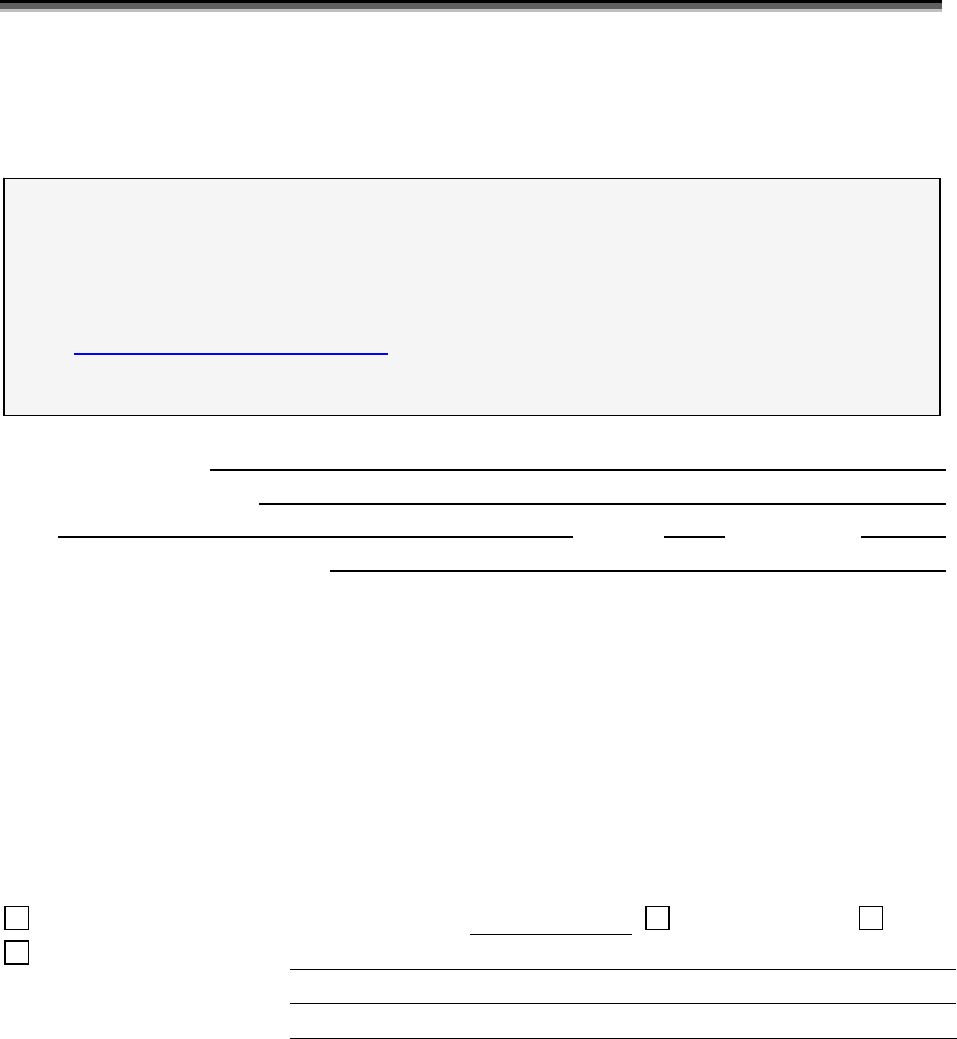
Construction Best Management Practices Plan (CBMPP)
INSERT PROJECT NAME and DATE
CBMPP Template, Version 1.1, September 2009 1
SECTION 1: SITE EVALUATION, ASSESSMENT, AND PLANNING
1.1 Project/Site Information
Project/Site Name:
Project Street/Location:
City: State: ZIP Code:
County or Similar Subdivision:
Latitude/Longitude of the Project Site (front gate). [Use one of three possible formats,
and specify method]
Latitude: Longitude:
1. _ _ º _ _ ' _ _'' N (degrees, minutes, seconds) 1. _ _ º _ _ ' _ _'' W (degrees, minutes, seconds)
2.
_ _ º _ _ . _ _' N (degrees, minutes, decimal) 2. _ _ º _ _ . _ _' W (degrees, minutes, decimal)
3.
_ _ . _ _ _ _ º N (decimal) 3. _ _ . _ _ _ _ º W (decimal)
Method for determining latitude/longitude:
USGS topographic map (specify scale): EPA Web site GPS
Other (please specify):
Instructions:
― In this section, you can gather some basic site information that will be helpful to you later when you file for
permit coverage.
― Detailed information on determining your site’s latitude and longitude can be found at
www.epa.gov/npdes/stormwater/latlong

Construction Best Management Practices Plan (CBMPP)
INSERT PROJECT NAME and DATE
CBMPP Template, Version 1.1, September 2009 2
1.2 Contact Information/Responsible Parties
Operator:
Insert Company or Organization Name:
Insert Name:
Insert Address:
Insert City, State, Zip Code:
Insert Telephone Number:
Insert Fax/Email:
Insert area of control (if more than one operator at site):
Repeat as necessary
Project Manager(s) or Site Supervisor(s):
Insert Company or Organization Name:
Insert Name:
Insert Address:
Insert City, State, Zip Code:
Insert Telephone Number:
Insert Fax/Email:
Insert area of control (if more than one operator at site):
Repeat as necessary
CBMPP Contact(s) / QCP:
Insert Company or Organization Name:
Insert Name:
Insert Address:
Insert City, State, Zip Code:
Insert Telephone Number:
Insert Fax/Email:
Insert area of control (if more than one operator at site):
Repeat as necessary
Instructions:
― List the operator, project managers, stormwater contact(s), and person or organization that prepared the
CBMPP. Indicate respective responsibilities, where appropriate.

Construction Best Management Practices Plan (CBMPP)
INSERT PROJECT NAME and DATE
CBMPP Template, Version 1.1, September 2009 3
QCI or Qualified Person(s):
Insert Company or Organization Name:
Insert Name:
Insert Address:
Insert City, State, Zip Code:
Insert Telephone Number:
Insert Fax/Email:
Insert area of control (if more than one operator at site):
Repeat as necessary
This CBMPP was Prepared by:
Insert Company or Organization Name:
Insert Name:
Insert Address:
Insert City, State, Zip Code:
Insert Telephone Number:
Insert Fax/Email:
Emergency 24-Hour Contact:
Insert Company or Organization Name:
Insert Name:
Insert Telephone Number:
1.3 Nature and Sequence of Construction Activity
Describe the general scope of the work for the project, major phases of construction, etc:
INSERT TEXT HERE
Proposed Activity(ies) to be Conducted:
Residential Commercial Industrial Road Construction Linear Utility
Other (please specify):
If Non-Coal, Non-Metallic Mining, Recovery, or Construction Material Management Site:
Dirt-Chert Sand-Gravel Shale-Clay Crushed-Dimension Stone
Other (please specify):
Instructions:
― Briefly describe the nature of the construction activity and approximate time frames (one or more
paragraphs, depending on the nature and complexity of the project).
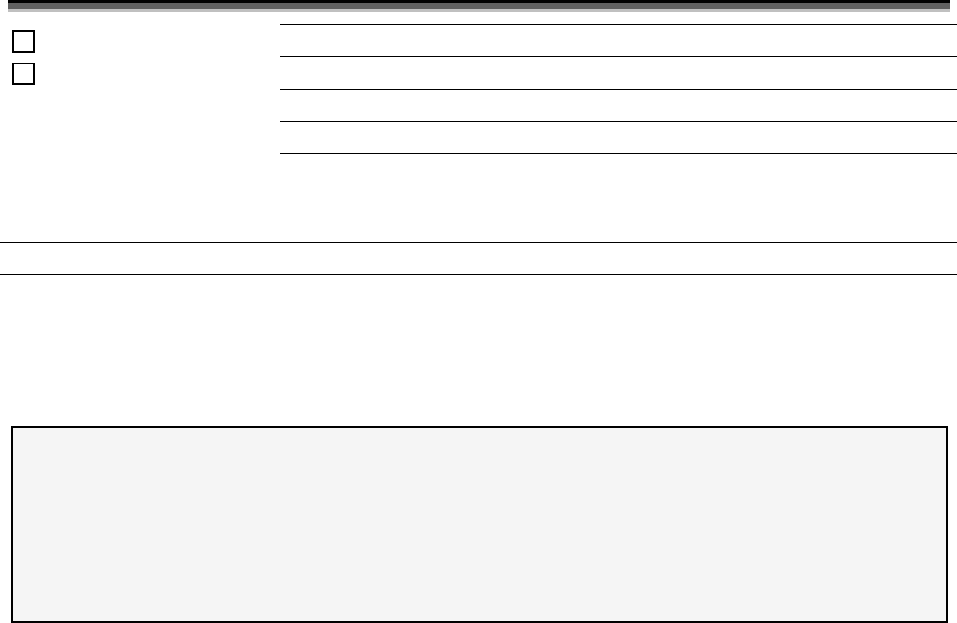
Construction Best Management Practices Plan (CBMPP)
INSERT PROJECT NAME and DATE
CBMPP Template, Version 1.1, September 2009 4
Other (please specify):
Other (please specify):
Primary SIC Code:
Primary NAICS Code:
Brief Description of Construction, Non-coal Mining, or Materials Management Activity:
Estimated Project Start Date: __ __ / __ __ / __ __ __ __
Estimated Project Completion Date: __ __ / __ __ / __ __ __ __
1.4 Soils, Slopes, Vegetation, and Current Drainage Patterns
Soil type(s):
Information Source(s):
Slopes (describe current slopes and note any changes due to grading or fill activities):
Drainage Patterns describe or provide map(s) of current drainage patterns and note any
changes dues to grading or fill activities):
Vegetation:
Other:
Instructions:
― Describe the existing soil conditions at the construction site including soil types, slopes and slope lengths,
drainage patterns, and other topographic features that might affect erosion and sediment control.
― Also, note any historic site contamination evident from existing site features and known past usage of the
site.

Construction Best Management Practices Plan (CBMPP)
INSERT PROJECT NAME and DATE
CBMPP Template, Version 1.1, September 2009 5
1.5 Pre- and Post- Construction Site Estimates
The following are estimates of the construction site.
Total project area: acres
Construction site area to be disturbed: acres
Percentage impervious area before construction: %
Percentage impervious area after construction: %
Instructions:
― See Appendix E for a selected discussion of stormwater calculation methodologies.
― Estimate the area to be disturbed by excavation, grading, or other construction activities, including dedicated
off-site borrow and fill areas.
― Calculate the percentage of impervious surface area before and after construction
― Calculate the runoff coefficients before and after construction.
― Calculate the pre- and post- construction stream velocities and volumes. The storm water CBMPs design for
construction sites should be sufficient to control the volume and rate of storm water runoff for the 2-year
frequency, 24-hour duration rainfall, such that the post-construction volume and rate of storm water runoff
will not significantly exceed the volume and rate of storm water runoff under pre-construction conditions.
The CBMPP should include:
Pre-Construction Hydrologic Analysis for volume and velocity showing methodologies used and
supporting calculations to include:
― A topographic map of existing site conditions with the basin boundaries indicated;
― Acreage, soil types and land cover of areas for each sub-basin affected by the project; and
― Methodologies, assumptions, site parameters and supporting design calculations used in
analyzing the volume and rate of storm water runoff for pre-construction conditions utilizing a 2-
year, 24-hour design storm.
― Calculate / Develop a site hydrograph.
Post-Construction Hydrologic Analysis for volume and velocity showing methodologies used and
supporting calculations to include:
― A topographic map of developed site conditions with the post-construction basin boundaries
indicated;
― Total area of post-construction impervious surfaces and other land cover areas for each sub-
basin affected by the project, and
― Methodologies, assumptions, site parameters and supporting design calculations used in
analyzing the volume and rate of storm water runoff for post-construction conditions utilizing a
2-year, 24-hour design storm.
― Calculate / Develop a site hydrograph.
― For more information reference the National Resources Conservation Services. National Engineering
Handbook. Part 630: Hydrology, 1969-2001. Available online at:
www.mi.nrcs.usda.gov/technical/engineering/neh.html
― For precipitation data, reference NOAA's National Weather Service Hydrometeorological Design Studies
Center available online at: http://hdsc.nws.noaa.gov/hdsc/pfds/other/al_pfds.html
― Reference Appendix E of this guidance document for an example worksheet for calculating the change in
runoff volume for a 2-
y
ear storm event as well as an exam
p
le h
y
dro
g
ra
p
h.

Construction Best Management Practices Plan (CBMPP)
INSERT PROJECT NAME and DATE
CBMPP Template, Version 1.1, September 2009 6
FROM APPENDIX E, INSERT WORKSHEET AND ASSOCIATED HYDROGRAPHS
HERE
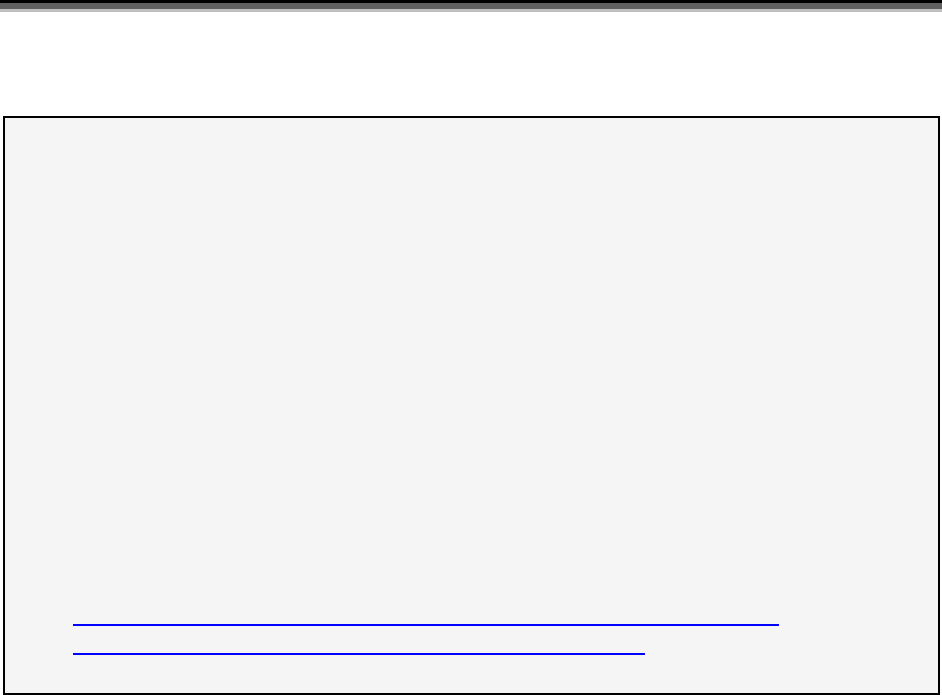
Construction Best Management Practices Plan (CBMPP)
INSERT PROJECT NAME and DATE
CBMPP Template, Version 1.1, September 2009 7
1.6 Receiving Waters
Description of receiving waters:
Description of storm sewer systems:
Description of impaired waters or waters subject to TMDLs:
Other:
Instructions:
― List the waterbody(s) that would receive stormwater from your site, including streams, rivers, lakes,
coastal waters, and wetlands. Describe each as clearly as possible, such as Mill Creek, an unnamed
tributary to Mill Creek, and so on.
― Indicate the location of all waters, including wetlands, on the site map.
― Note any stream crossings, if applicable.
― List the storm sewer system or drainage system that stormwater from your site could discharge to and the
waterbody(s) that it ultimately discharges to.
― If any of the waterbodies above are Outstanding Alabama Waters (OAW) or Outstanding National
Resource Waters (ONRW), your CBMPP should specifically include all reasonable measures to ensure
the discharges from your site will not interfere with the waterbody(ies) designated use. For a list of OAW
and ONRW waterbodies see: www.adem.state.al.us/WaterDivision/WQuality/WQUseClass.htm
― If any of the waterbodies above are impaired and/or subject to Total Maximum Daily Loads (TMDLs),
please list the pollutants causing the impairment and any specific requirements in the TMDL(s) that are
applicable to construction sites. Your CBMPP should specifically include all reasonable measures to
prevent the discharge of these pollutants.
― Also, for a list of TMDLs and 303(d) impaired waters, see:
http://www.adem.state.al.us/WaterDivision/WQuality/TMDL/ApprovedTMDLs030409.htm
http://www.adem.state.al.us/WaterDivision/WQuality/303d/WQ303d.htm
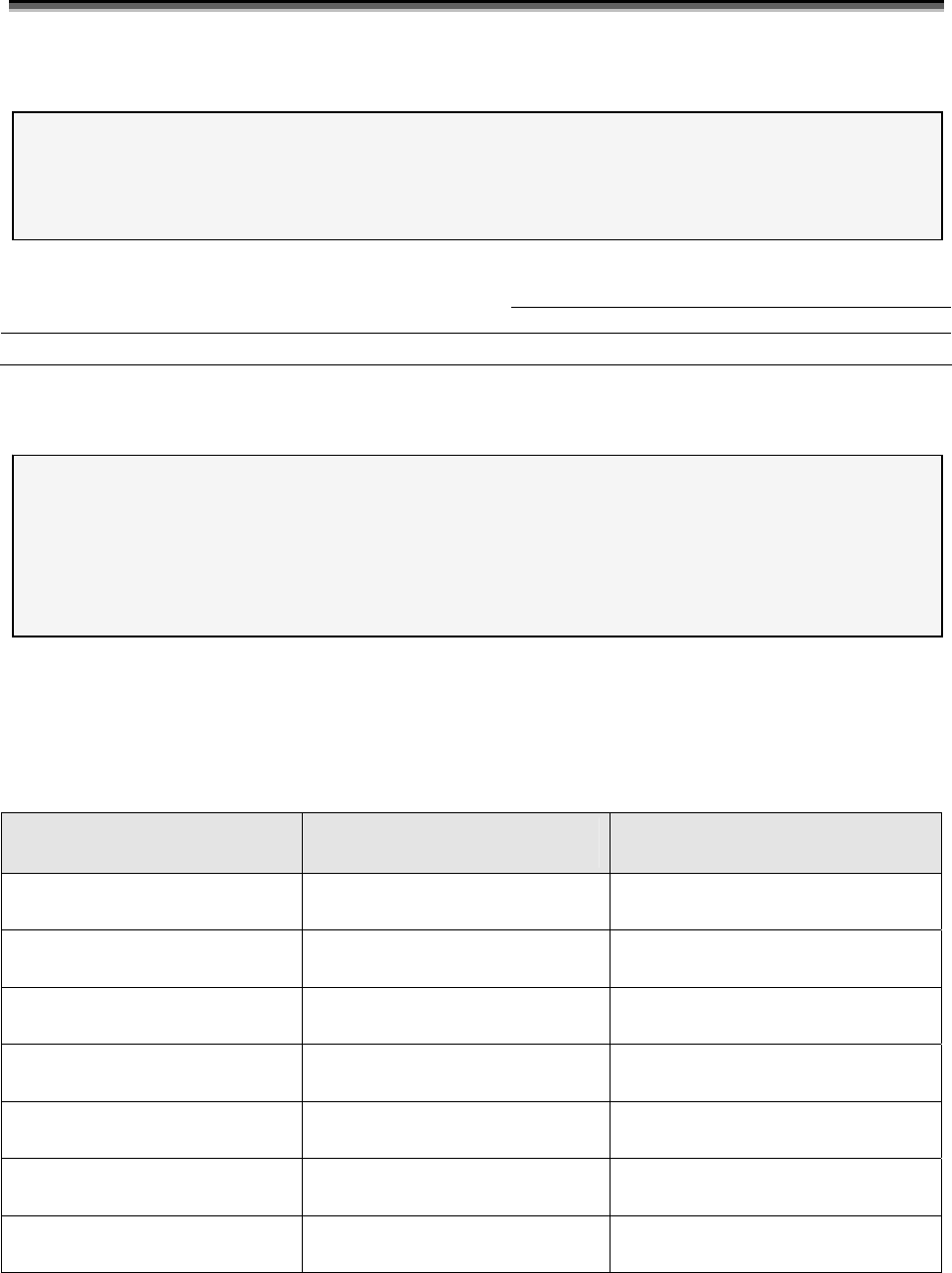
Construction Best Management Practices Plan (CBMPP)
INSERT PROJECT NAME and DATE
CBMPP Template, Version 1.1, September 2009 8
1.7 Site Features and Sensitive Areas to be Protected
Describe measures to protect these features:
1.8 Potential Sources of Pollution
Potential sources of sediment to stormwater runoff:
INSERT TEXT OR TABLE HERE
Potential pollutants and known sources, other than sediment, to stormwater runoff:
INSERT TEXT OR USE TABLE BELOW
Trade Name Material
Potential Known
Stormwater Pollutants
Storage Location
Instructions:
― Describe unique site features including streams, stream buffers, wetlands, trees (such as oak, pine, etc.),
natural vegetation, steep slopes, or highly erodible soils that are to be preserved.
Instructions:
― Identify and list all potential sources of sediment, which may reasonably be expected to affect the quality of
stormwater discharges from the construction site.
― Identify and list all potential known sources of pollution, other than sediment, which may reasonably be
expected to affect the quality of stormwater discharges from the construction site.
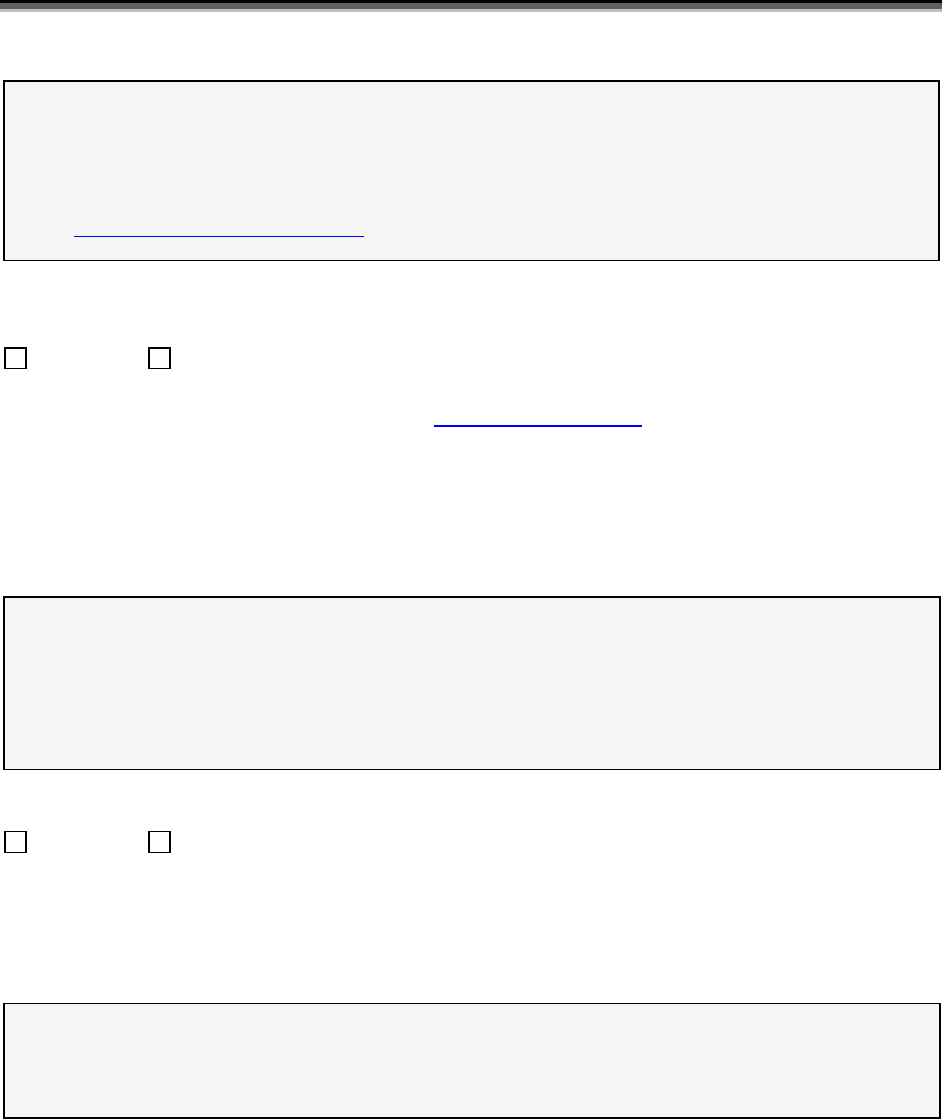
Construction Best Management Practices Plan (CBMPP)
INSERT PROJECT NAME and DATE
CBMPP Template, Version 1.1, September 2009 9
1.9 Endangered Species
Are there any known endangered or threatened species and critical habitats on or near the
project area?
Yes No
If yes, ADEM strongly recommends that the site operator work closely with the appropriate field
office of the U.S. Fish and Wildlife Service www.fws.gov/daphne
[Daphne, AL (251) 441-5181]
and the Alabama Department of Conservation and Natural Resources Wildlife & Freshwater
Fisheries [(334) 242-3465].
1.10 Historic Preservation
Are there any known historic sites on or near the construction site?
Yes No
If yes, ADEM strongly recommends that the site operator work closely with the Alabama
Historical Commission's Historic Preservation office [(334) 230-2667].
1.11 Applicable Federal, State or Local Programs
INSERT TEXT HERE
Instructions:
― Note other applicable federal, state or local soil and erosion control and stormwater management
requirements that apply to your construction site.
Instructions:
― Before you begin construction, you should review federal and any applicable state, local, or tribal historic
preservation laws and determine if there are historic sites on or near your project. If so, you might need to
make adjustments to your construction plans or to your stormwater controls to ensure that these historic
sites are not damaged.
Instructions:
― Before beginning construction, the determination of whether endangered or threatened species or their
critical habitats are on or near your site should be made.
― Additional information on Endangered Species Act (ESA) provisions is found at
www.epa.gov/npdes/stormwater/esa
.

Construction Best Management Practices Plan (CBMPP)
INSERT PROJECT NAME and DATE
CBMPP Template, Version 1.1, September 2009 10
1.12 Maps
Include the site maps with the CBMPP.
Instructions:
― Attach site maps. For most projects, a series of site maps is recommended. The first should show the
undeveloped site and its current features. An additional map or maps should be created to show the
developed site or for more complicated sites show the major phases of development.
― Attach to the Registration, a 7.5 minute series USGS topographic map(s) or equivalent map(s) no larger
than 11 by 17 inches (several pages may be necessary) of the area extending to at least one-mile beyond
property boundaries. The topographic or equivalent map(s) must include a caption indicating the name of
the topographic map, name of the registrant, site name, county, and township, range, & section(s) where
the project site is located.
The topographic or equivalent map(s), at a minimum, must show:
― An outline of legal boundary of entire property, including right-of-ways;
― Boundaries of the project site or activity within the legal boundary of the entire property;
― Owners/lease or other boundaries;
― All existing & proposed disturbed areas;
― Existing Buildings and structures;
― All proposed Buildings and structures;
― Contour lines, township-range-section lines;
― All known project site dirt/improved access/haul roads;
― All surrounding unimproved/improved roads;
― All utilities & railroad tracks;
― Areas and timing of soil disturbance;
― Areas that will not be disturbed;
― Natural features to be preserved;
― Locations of major structural and non-structural BMPs identified in the CBMPP;
― Direction(s) of stormwater flow and approximate slopes before and after major grading activities;
― Locations and timing of stabilization structures/measures;
― Locations of off-site material, waste, borrow, or equipment storage areas;
― Locations of all waters of the State, including lakes/springs/wells/wetlands, perennial, intermittent, &
ephemeral streams;
― Proposed and Existing stormwater point(s) discharging to a water of the State;
― Proposed and Existing stormwater point(s) discharging from the site;
― Locations of storm drain inlets;
― Drainage patterns/swales/washes; and
― Areas of final stabilization / vegetation following construction, if construction is phased then include timing
of stabilization/vegetation for each phase.

Construction Best Management Practices Plan (CBMPP)
INSERT PROJECT NAME and DATE
CBMPP Template, Version 1.1, September 2009 11
SECTION 2: EROSION AND SEDIMENT CONTROL BMPS
Instructions:
― Describe the BMPs that will be implemented to control pollutants in stormwater discharges. Selection of
the appropriate BMPs relies upon the proper characterization of the project site and accurate evaluation of
the anticipated erosion and the effectiveness of proposed erosion and sediment control practices. The
NRCS Revised Universal Soil Loss Equation Version 2 (RUSLE2) model is a useful modeling tool in
estimating erosion rates and sediment yield. There are several benefits of using RUSLE2, specifically the
ability to use a quantitative iterative process to select the most appropriate combination of permanent and
temporary Best Management Practices (BMPs) for soil stabilization and erosion and sedimentation control
during the construction and post-construction project phases.
For each major activity identified:
― Clearly describe appropriate control measures.
― Describe the general sequence during the construction process in which the BMP measures will be
implemented.
― Describe the maintenance and inspection procedures that will be used for each specific BMP.
― Include protocols, thresholds, and schedules for cleaning, repairing, or replacing damaged or failing BMPs.
― Identify staff responsible for maintaining BMPs.
― Categorize each BMP under one of the following 10 areas of BMP activity as described below:
2.1 Minimize disturbed area and protect natural features and soil
2.2 Phase Construction Activity
2.3 Control Stormwater flowing onto and through the project
2.4 Stabilize Soils
2.5 Stabilize Slopes
2.6 Protect Storm Drain Inlets
2.7 Establish Perimeter Controls and Sediment Barriers
2.8 Retain Sediment On-Site
2.9 Establish Stabilized Construction Exits
2.10 Any Additional BMPs (i.e., stream crossing protection, stream bank protection)
― Note the location of each BMP on your site map(s).
― You must submit Material Safety Data Sheets (MSDS) before anionic polymers or polyacrylamides (PAM)
can be applied.
― For any structural BMPs, you should provide design specifications and details and refer to them. Attach
them as appendices to the CBMPP or within the text of the CBMPP.
― Consult the Alabama Handbook for Erosion Control, Sediment Control and Stormwater Management on
Construction Sites and Urban Areas June 2003 (Revised, 03/09)
http://swcc.alabama.gov/pages/erosion_control.aspx?sm=b_b
― For more information or ideas on BMPs, see EPA’s National Menu of BMPs
www.epa.gov/npdes/stormwater/menuofbmps
― For more information regarding the NRCS RUSLE2, see
http://fargo.nserl.purdue.edu/rusle2_dataweb/About_RUSLE2_Technology.htm
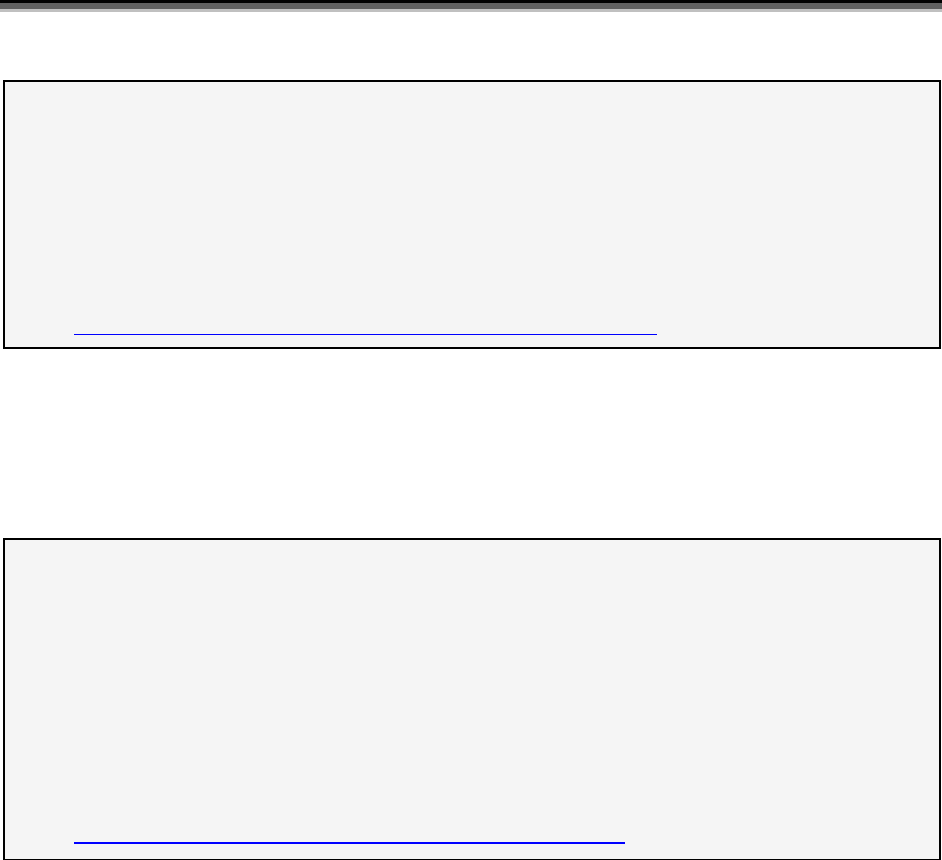
Construction Best Management Practices Plan (CBMPP)
INSERT PROJECT NAME and DATE
CBMPP Template, Version 1.1, September 2009 12
2.1 Minimize Disturbed Area
INSERT TEXT or TABLE HERE, include inspection and maintenance schedules as appropriate
and staff responsible for maintenance
2.2 Phase Construction Activity
• Phase I
Describe phase
Duration of phase (start date, end date)
List BMPs associated with this phase
Describe stabilization methods for this phase (describe any temporary stabilization
methods that will be used before final stabilization)
• Phase II
Describe phase
Duration of phase (start date, end date)
List BMPs associated with this phase
Describe stabilization methods for this phase (describe any temporary stabilization
methods that will be used before final stabilization)
Repeat as needed
Instructions:
― Describe the intended construction sequencing and timing of major activities, including any opportunities
for phasing grading and stabilization activities to minimize the overall amount of disturbed soil that will be
subject to potential erosion at one time. Also, describe opportunities for timing grading and stabilization so
that all or a majority of the soil disturbance occurs during a time of year with less erosion potential (i.e.,
during the dry or less windy season). Develop a separate, detailed site map for each phase of
construction.
― Consult the Alabama Handbook for Erosion Control, Sediment Control and Stormwater Management on
Construction Sites and Urban Areas June 2003 (Revised, 03/09)
― Also, see EPA’s Construction Sequencing BMP Fact Sheet at
www.epa.gov/npdes/stormwater/menuofbmps/construction/cons_seq
Instructions:
― Describe the areas that will be disturbed with each phase of construction and the methods (e.g., signs,
fences) that you will use to protect those areas that should not be disturbed. Describe natural features
identified earlier and how each will be protected during construction activity. Also describe how topsoil will
be stockpiled appropriately. Include these areas and associated BMPs on your site map(s) also.
― Consult the Alabama Handbook for Erosion Control, Sediment Control and Stormwater Management on
Construction Sites and Urban Areas June 2003 (Revised, 3-09)
― Also, see EPA's Preserving Natural Vegetation BMP Fact Sheet at
www.epa.gov/npdes/stormwater/menuofbmps/construction/perserve_veg
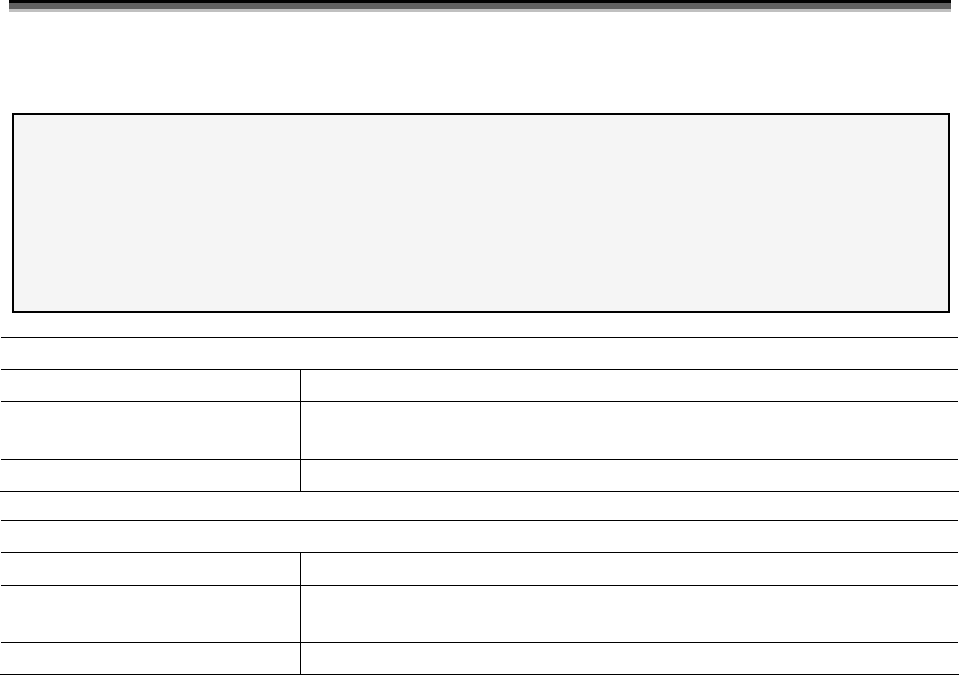
Construction Best Management Practices Plan (CBMPP)
INSERT PROJECT NAME and DATE
CBMPP Template, Version 1.1, September 2009 13
2.3 Control Stormwater Flowing onto and through the Project
BMP Description:
Installation Schedule:
Maintenance and
Inspection:
Responsible Staff:
BMP Description:
Installation Schedule:
Maintenance and
Inspection:
Responsible Staff:
Repeat as needed
Instructions:
― Describe structural practices (e.g., diversions, berms, ditches, storage basins) including design
specifications and details used to divert flows from exposed soils, retain or detain flows, or otherwise limit
runoff and the discharge of pollutants from exposed areas of the site.
― Consult the Alabama Handbook for Erosion Control, Sediment Control and Stormwater Management on
Construction Sites and Urban Areas June 2003 (Revised, 03/09)
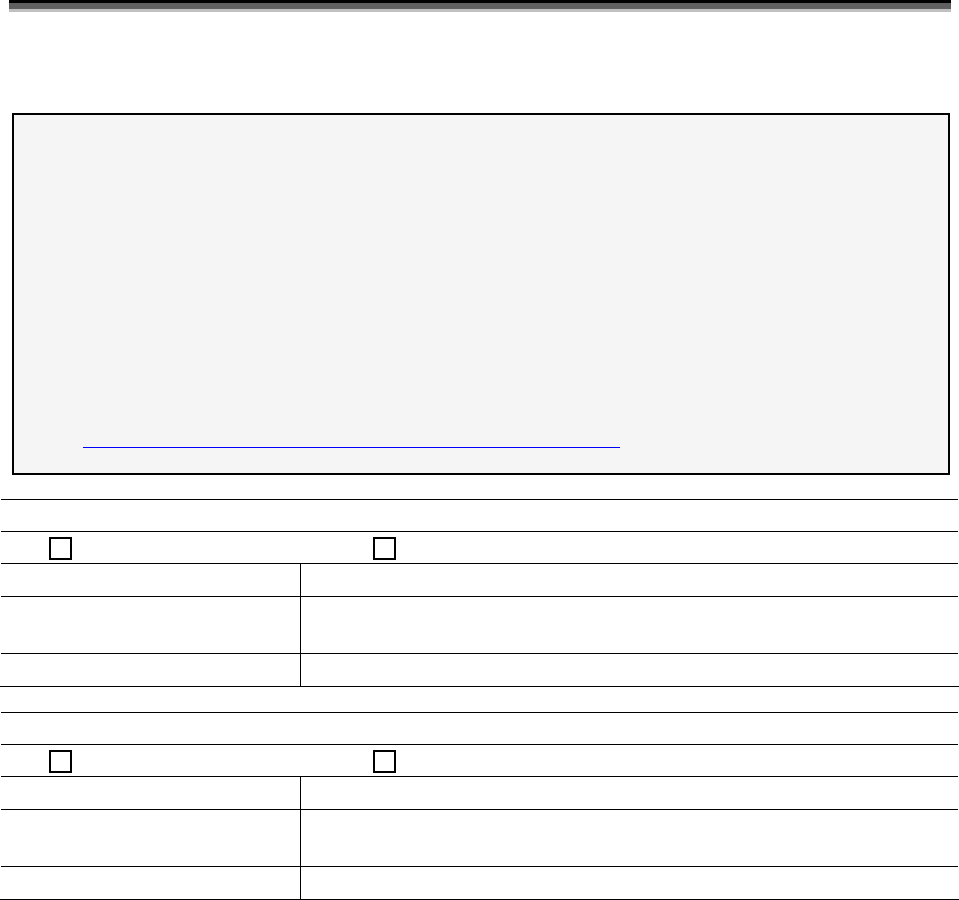
Construction Best Management Practices Plan (CBMPP)
INSERT PROJECT NAME and DATE
CBMPP Template, Version 1.1, September 2009 14
2.4 Stabilize Soils
BMP Description:
Permanent Temporary
Installation Schedule:
Maintenance and
Inspection:
Responsible Staff:
BMP Description:
Permanent Temporary
Installation Schedule:
Maintenance and
Inspection:
Responsible Staff:
Repeat as needed
Instructions:
― Describe controls (e.g., interim seeding with native vegetation, hydroseeding) to stabilize exposed soils
where construction activities have temporarily or permanently ceased. Also describe measures to control
dust generation. Avoid using impervious surfaces for stabilization whenever possible.
― Note: ADEM Administrative Code r. 335-6-12-.21(2)(b)5. requires measures to be implemented on all
areas not undergoing active disturbance or active construction and progressive construction for longer
than 13 days to prevent/minimize erosion and ensure timely temporary vegetative cover, and permanent
vegetation or cover of all disturbed areas when disturbance is complete.
― Consult the Alabama Handbook for Erosion Control, Sediment Control and Stormwater Management on
Construction Sites and Urban Areas June 2003 (Revised, 03/09)
― Also, see EPA’s Seeding BMP Fact Sheet at
www.epa.gov/npdes/stormwater/menuofbmps/construction/seeding
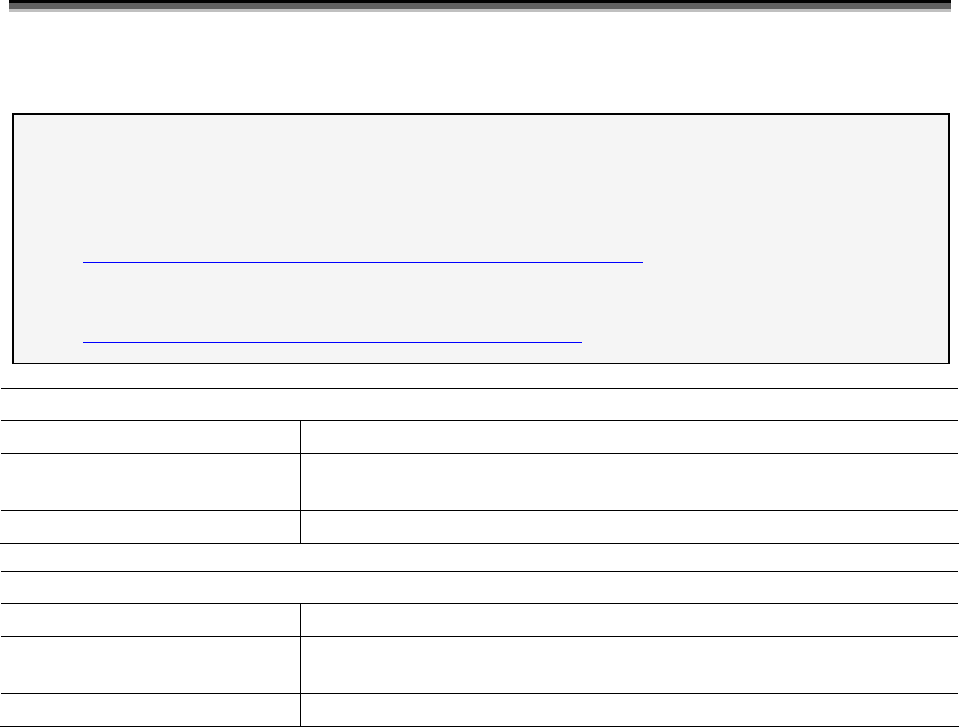
Construction Best Management Practices Plan (CBMPP)
INSERT PROJECT NAME and DATE
CBMPP Template, Version 1.1, September 2009 15
2.5 Stabilize Slopes
BMP Description:
Installation Schedule:
Maintenance and
Inspection:
Responsible Staff:
BMP Description:
Installation Schedule:
Maintenance and
Inspection:
Responsible Staff:
Repeat as needed
Instructions:
― Describe controls (e.g., erosion control blankets, tackifiers) including design specifications and details that
will be implemented to protect all slopes.
― See EPA’s Geotextiles BMP Fact Sheet at
www.epa.gov/npdes/stormwater/menuofbmps/construction/geotextiles
― Also, see Alabama Handbook for Erosion Control, Sediment Control and Stormwater Management on
Construction Sites and Urban Areas June 2003 (Revised, 03/09)
http://swcc.alabama.gov/pages/erosion_control.aspx?sm=b_b.
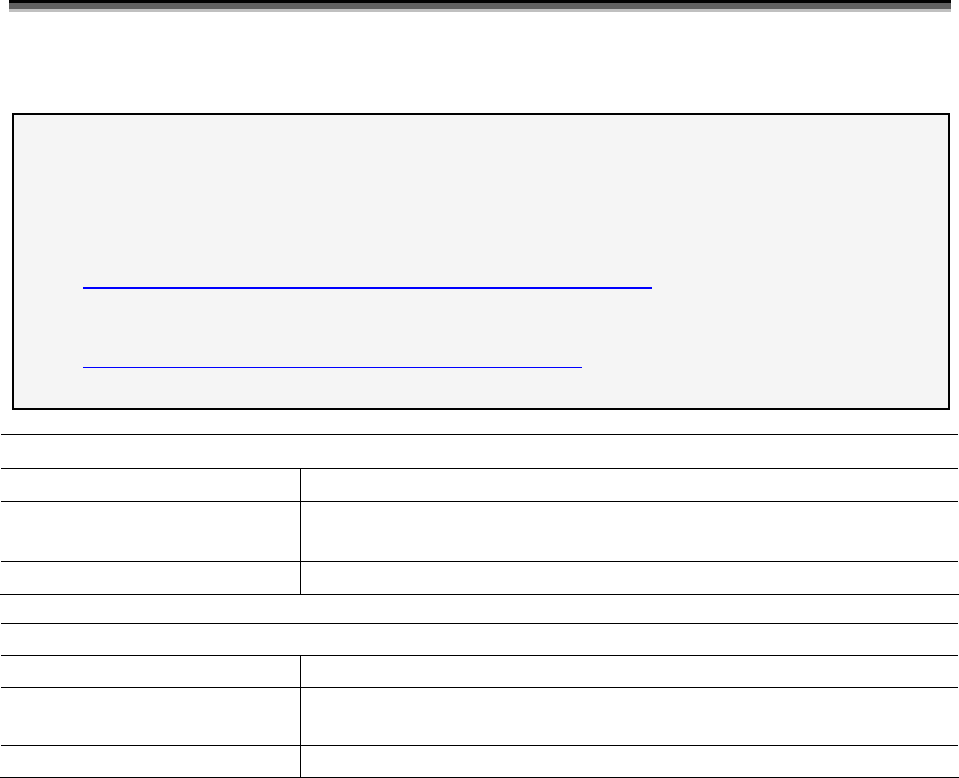
Construction Best Management Practices Plan (CBMPP)
INSERT PROJECT NAME and DATE
CBMPP Template, Version 1.1, September 2009 16
2.6 Protect Storm Drain Inlets
BMP Description:
Installation Schedule:
Maintenance and
Inspection:
Responsible Staff:
BMP Description:
Installation Schedule:
Maintenance and
Inspection:
Responsible Staff:
Repeat as needed
Instructions:
― Describe controls (e.g., inserts, rock-filled bags, or block and gravel) including design specifications and
details that will be implemented to protect all inlets receiving stormwater from the project during the entire
project.
― See EPA’s Storm Drain Inlet Protection BMP Fact Sheet at
www.epa.gov/npdes/stormwater/menuofbmps/construction/storm_drain
― Also, see Alabama Handbook for Erosion Control, Sediment Control and Stormwater Management on
Construction Sites and Urban Areas June 2003 (Revised, 03/09)
http://swcc.alabama.gov/pages/erosion_control.aspx?sm=b_b.
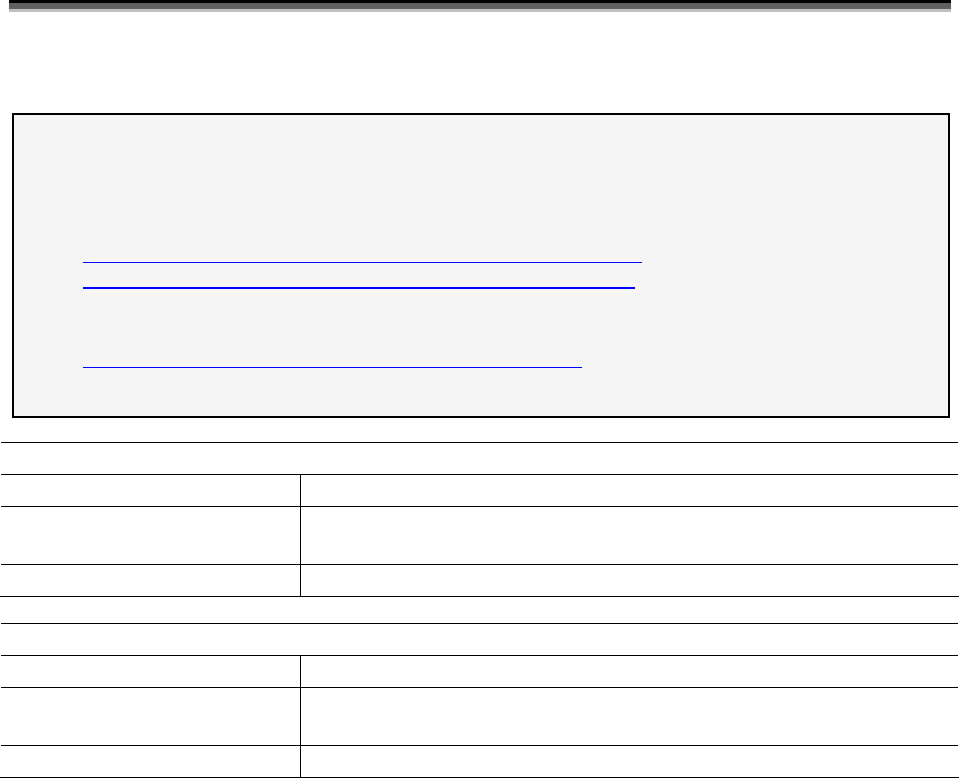
Construction Best Management Practices Plan (CBMPP)
INSERT PROJECT NAME and DATE
CBMPP Template, Version 1.1, September 2009 17
2.7 Establish Perimeter Controls and Sediment Barriers
BMP Description:
Installation Schedule:
Maintenance and
Inspection:
Responsible Staff:
BMP Description:
Installation Schedule:
Maintenance and
Inspection:
Responsible Staff:
Repeat as needed
Instructions:
― Describe structural practices (e.g., silt fences or fiber rolls) including design specifications and details to
filter and trap sediment before it leaves the construction site.
― See, EPA’s Silt Fence BMP Fact Sheet at
www.epa.gov/npdes/stormwater/menuofbmps/construction/silt_fences
, or Fiber Rolls BMP Fact Sheet at
www.epa.gov/npdes/stormwater/menuofbmps/construction/fiber_rolls
― Also, see Alabama Handbook for Erosion Control, Sediment Control and Stormwater Management on
Construction Sites and Urban Areas June 2003 (Revised, 03/09)
http://swcc.alabama.gov/pages/erosion_control.aspx?sm=b_b.
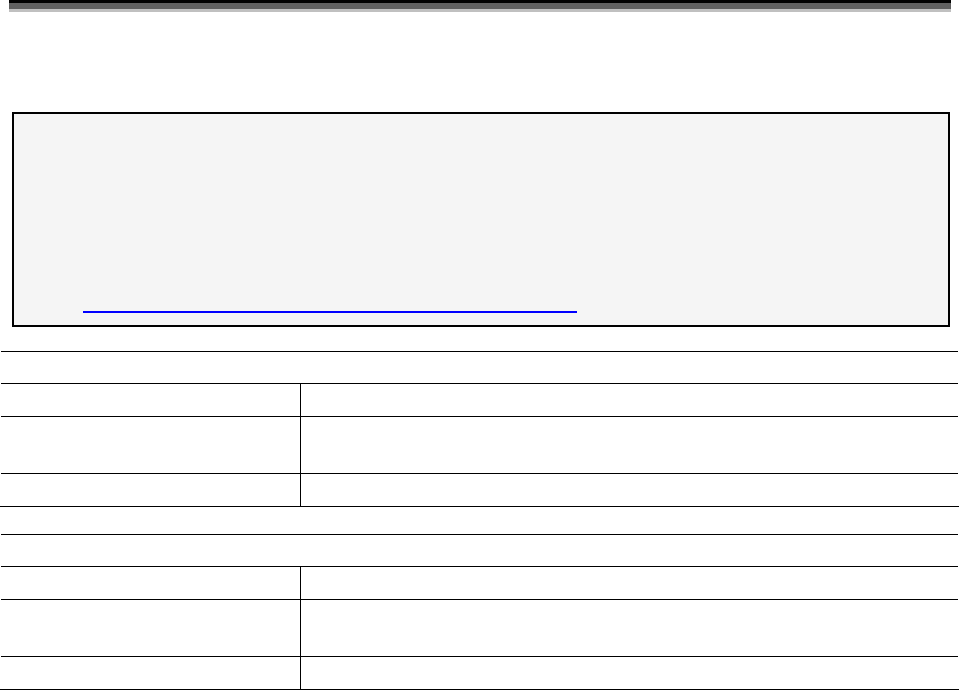
Construction Best Management Practices Plan (CBMPP)
INSERT PROJECT NAME and DATE
CBMPP Template, Version 1.1, September 2009 18
2.8 Retain Sediment On-Site
BMP Description:
Installation Schedule:
Maintenance and
Inspection:
Responsible Staff:
BMP Description:
Installation Schedule:
Maintenance and
Inspection:
Responsible Staff:
Repeat as needed
Instructions:
― Describe sediment control practices (e.g., sediment trap or sediment basin), including design
specifications and details (volume, dimensions, outlet structure) that will be implemented at the
construction site to retain sediments on-site.
― Also, see Alabama Handbook for Erosion Control, Sediment Control and Stormwater Management on
Construction Sites and Urban Areas June 2003 (Revised, 03/09)
http://swcc.alabama.gov/pages/erosion_control.aspx?sm=b_b
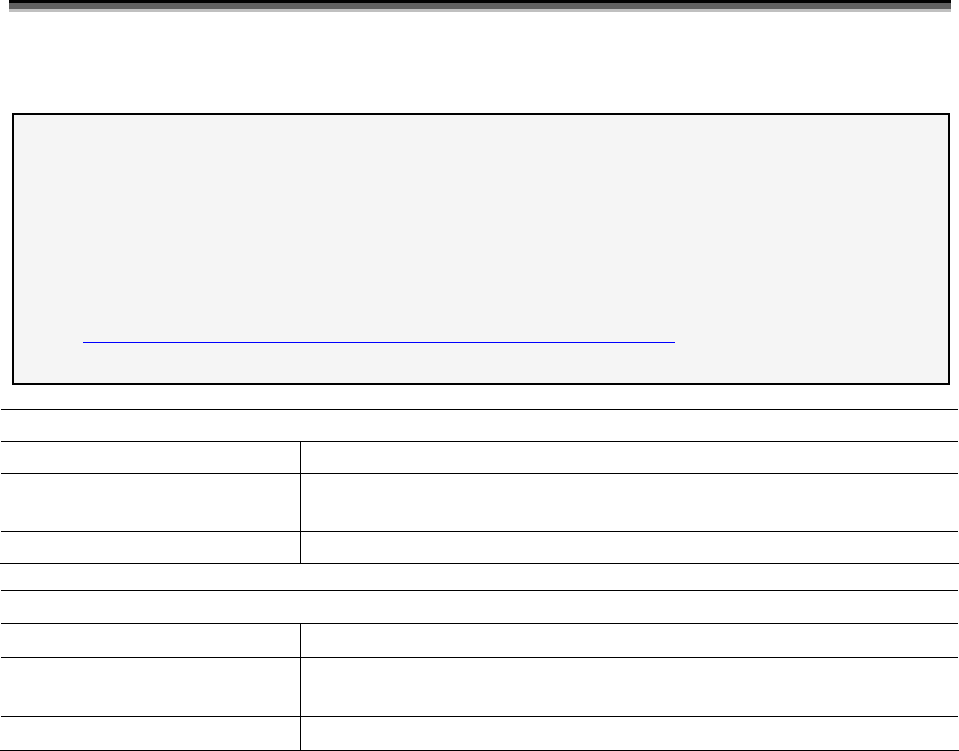
Construction Best Management Practices Plan (CBMPP)
INSERT PROJECT NAME and DATE
CBMPP Template, Version 1.1, September 2009 19
2.9 Establish Stabilized Construction Exits
BMP Description:
Installation Schedule:
Maintenance and
Inspection:
Responsible Staff:
BMP Description:
Installation Schedule:
Maintenance and
Inspection:
Responsible Staff:
Repeat as needed
Instructions:
― Describe location(s) of vehicle entrance(s) and exit(s), procedures to remove accumulated sediment off-
site (e.g., vehicle tracking), and stabilization practices (e.g., stone pads or wash racks or both) to minimize
off-site vehicle tracking of sediments and discharges to stormwater.
― Consult the Alabama Handbook for Erosion Control, Sediment Control and Stormwater Management on
Construction Sites and Urban Areas June 2003 (Revised, 03/09)
― Also, see EPA’s Construction Entrances BMP Fact Sheet at
www.epa.gov/npdes/stormwater/menuofbmps/construction/cons_entrance
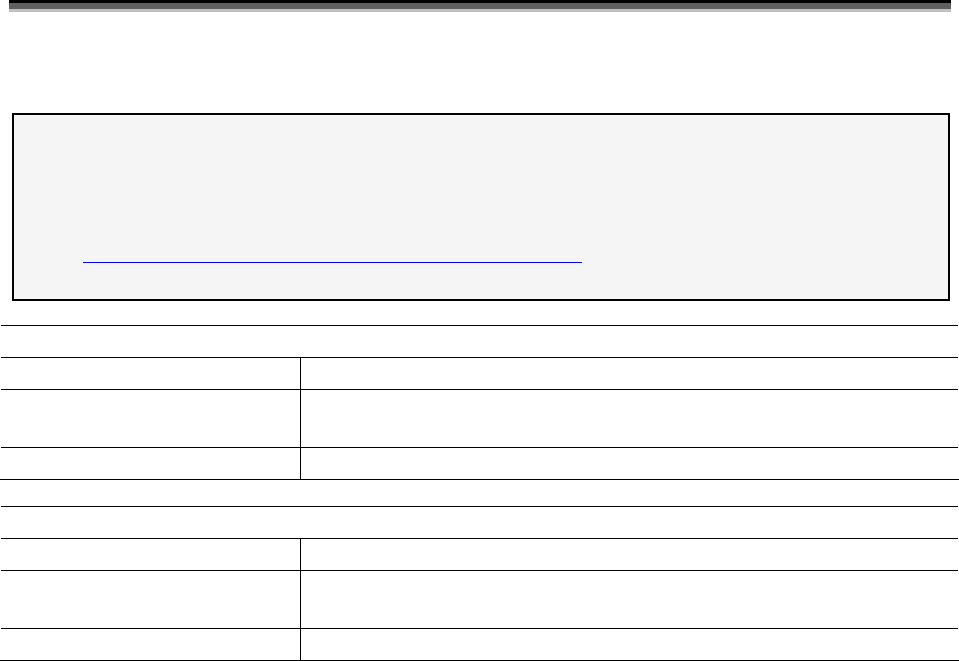
Construction Best Management Practices Plan (CBMPP)
INSERT PROJECT NAME and DATE
CBMPP Template, Version 1.1, September 2009 20
2.10 Additional BMPs
BMP Description:
Installation Schedule:
Maintenance and
Inspection:
Responsible Staff:
BMP Description:
Installation Schedule:
Maintenance and
Inspection:
Responsible Staff:
Repeat as needed
Instructions:
― Describe additional BMPs that do not fit into the above categories.
― Also, see Alabama Handbook for Erosion Control, Sediment Control and Stormwater Management on
Construction Sites and Urban Areas June 2003 (Revised, 03/09)
http://swcc.alabama.gov/pages/erosion_control.aspx?sm=b_b.
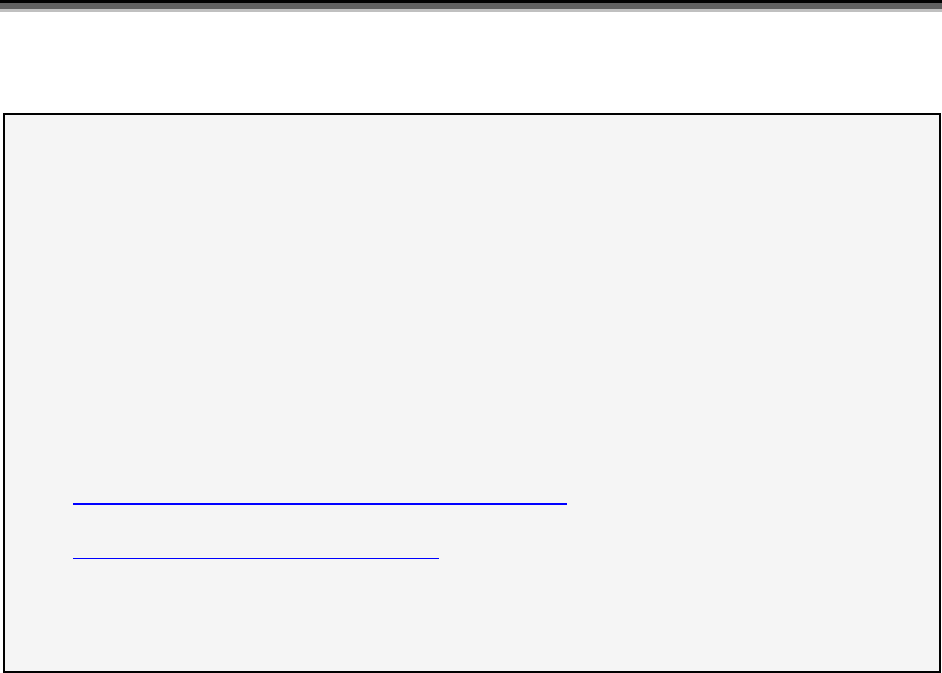
Construction Best Management Practices Plan (CBMPP)
INSERT PROJECT NAME and DATE
CBMPP Template, Version 1.1, September 2009 21
SECTION 3: GOOD HOUSEKEEPING (GROUNDS KEEPING) BMPS
Instructions:
― Describe the key good housekeeping BMPs that will be implemented to control pollutants in stormwater.
― Categorize each good housekeeping BMP under one of the following seven categories:
3.1 Material Handling and Waste Management
3.2 Establish Proper Building Material Staging Areas
3.3 Designate Washout Areas
3.4 Establish Proper Equipment/Vehicle Fueling and Maintenance Practices
3.5 Allowable Non-Stormwater Discharges and Control Equipment/Vehicle Washing
3.6 Spill Prevention, Control and Management
3.7 Any Additional BMPs
― Consult the Alabama Handbook for Erosion Control, Sediment Control and Stormwater Management on
Construction Sites and Urban Areas June 2003 (Revised, 03/09).
http://swcc.alabama.gov/pages/erosion_control.aspx?sm=b_b
― For more information or ideas on BMPs, see EPA’s National Menu of BMPs
www.epa.gov/npdes/stormwater/menuofbmps
― Please consider pollution prevention (P2) - ADEM encourages you to exercise pollution prevention
practices and alternatives at your facility. Pollution prevention will assist you in complying with effluent
limitations and permit regulations.
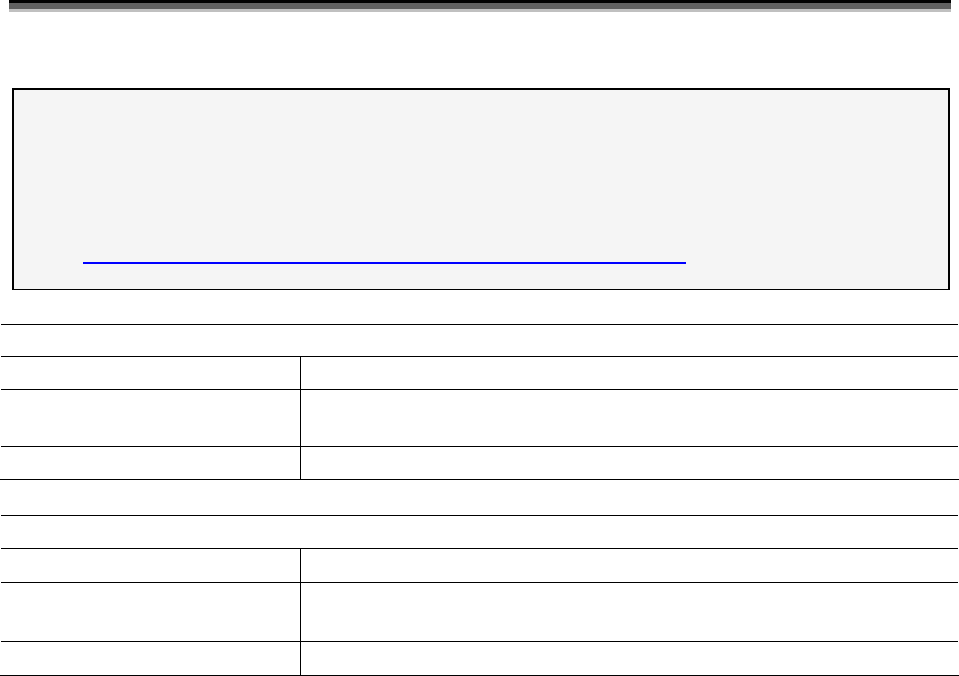
Construction Best Management Practices Plan (CBMPP)
INSERT PROJECT NAME and DATE
CBMPP Template, Version 1.1, September 2009 22
3.1 Material Handling and Waste Management
BMP Description:
Installation Schedule:
Maintenance and
Inspection:
Responsible Staff:
BMP Description:
Installation Schedule:
Maintenance and
Inspection:
Responsible Staff:
Repeat as needed
Instructions:
― Describe measures (e.g., trash disposal, sanitary wastes, recycling, and proper material handling) to
prevent the discharge of solid materials and/or wastes to receiving waters, except as authorized by a
permit issued under section 404 of the CWA.
― Also, see EPA’s General Construction Site Waste Management BMP Fact Sheet at
www.epa.gov/npdes/stormwater/menuofbmps/construction/cons_wasteman

Construction Best Management Practices Plan (CBMPP)
INSERT PROJECT NAME and DATE
CBMPP Template, Version 1.1, September 2009 23
3.2 Establish Proper Building Material Staging Areas
BMP Description:
Installation Schedule:
Maintenance and
Inspection:
Responsible Staff:
BMP Description:
Installation Schedule:
Maintenance and
Inspection:
Responsible Staff:
Repeat as needed
Instructions:
― Describe construction materials expected to be stored on-site and procedures for storage of materials to
minimize exposure of the materials to stormwater.
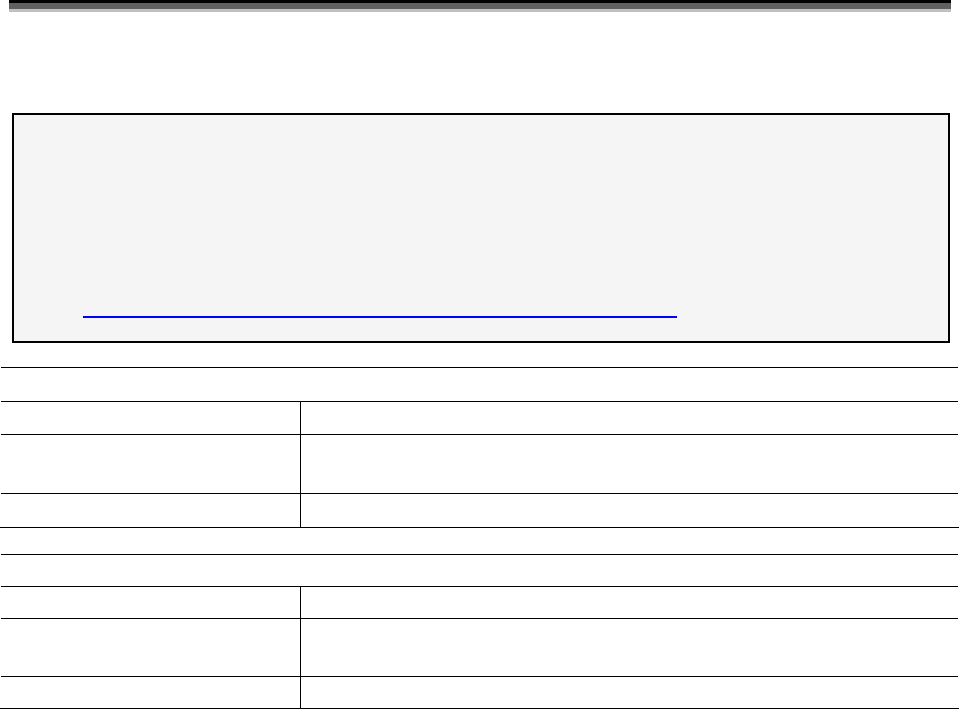
Construction Best Management Practices Plan (CBMPP)
INSERT PROJECT NAME and DATE
CBMPP Template, Version 1.1, September 2009 24
3.3 Designate Washout Areas
BMP Description:
Installation Schedule:
Maintenance and
Inspection:
Responsible Staff:
BMP Description:
Installation Schedule:
Maintenance and
Inspection:
Responsible Staff:
Repeat as needed
Instructions:
― Describe location(s) and controls to eliminate the potential for discharges from washout areas for concrete
mixers, paint, stucco, etc.
― For information reference ADEM Administrative Code Chapters 335-6-5 and 335-6-6 for applicable SID
and NPDES permit requirements.
― Also, see EPA’s Concrete Washout BMP Fact Sheet at
www.epa.gov/npdes/stormwater/menuofbmps/construction/concrete_wash
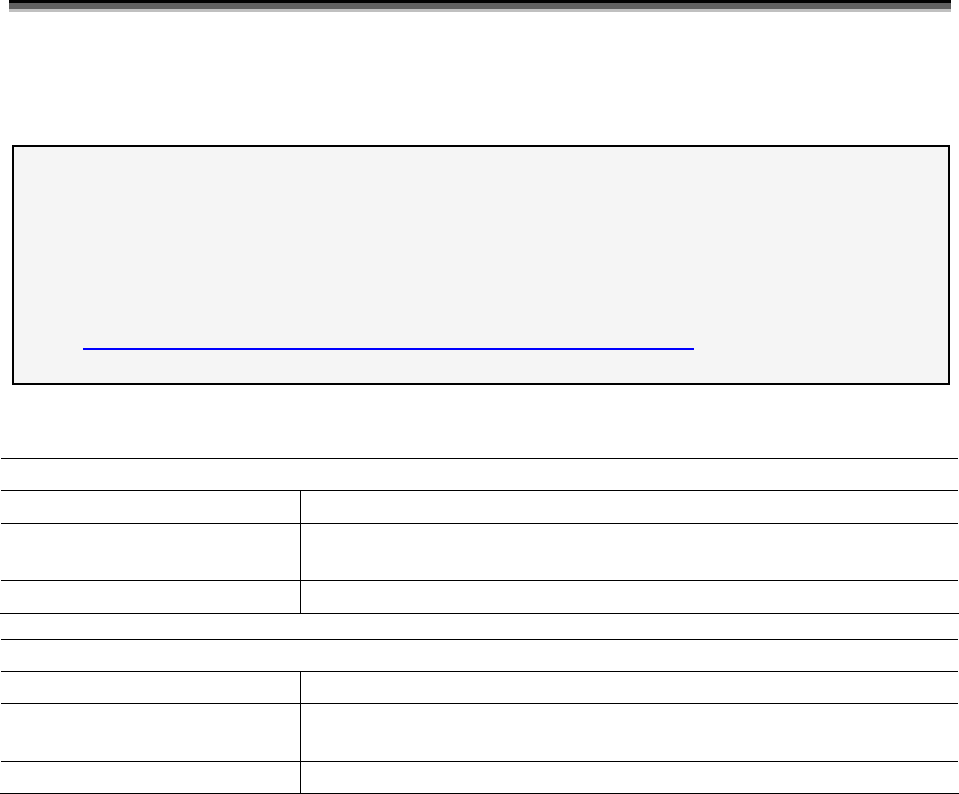
Construction Best Management Practices Plan (CBMPP)
INSERT PROJECT NAME and DATE
CBMPP Template, Version 1.1, September 2009 25
3.4 Establish Proper Equipment/Vehicle Fueling and
Maintenance Practices
BMP Description:
Installation Schedule:
Maintenance and
Inspection:
Responsible Staff:
BMP Description:
Installation Schedule:
Maintenance and
Inspection:
Responsible Staff:
Repeat as needed
Instructions:
― Describe equipment/vehicle fueling and maintenance practices that will be implemented to control
pollutants to stormwater (e.g., secondary containment, drip pans, and spill kits).
― For more information reference ADEM Administrative Code Chapters 335-6-5 and 335-6-6 for applicable
SID and NPDES permit requirements.
― Also, see EPA’s Vehicle Maintenance and Washing Areas BMP Fact Sheet at
www.epa.gov/npdes/stormwater/menuofbmps/construction/vehicile_maintain
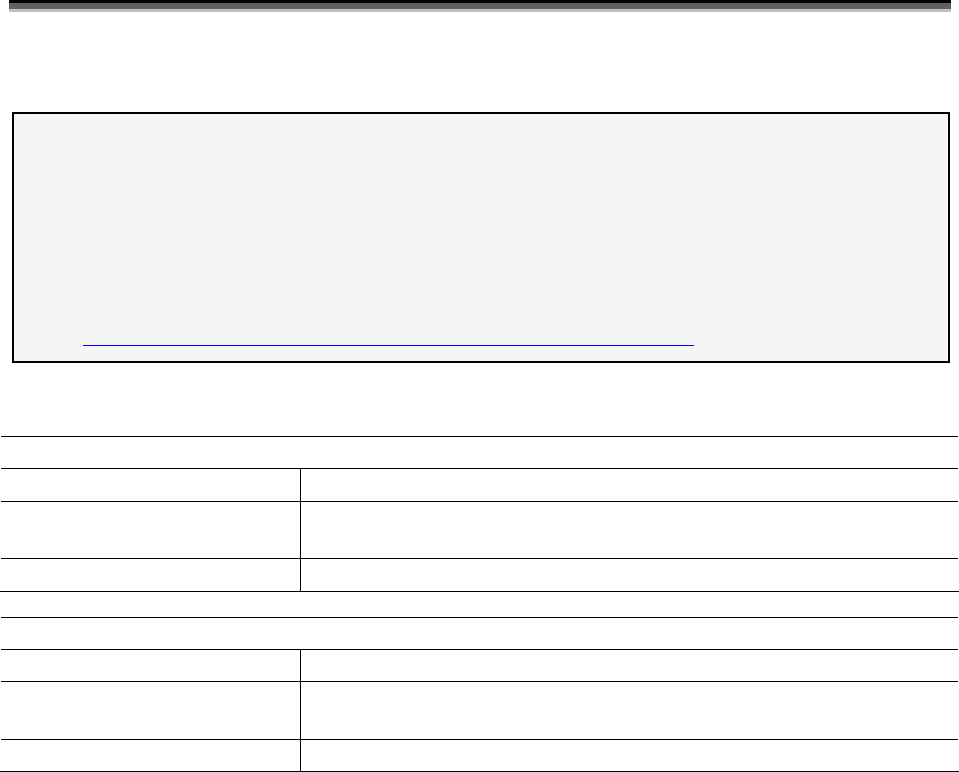
Construction Best Management Practices Plan (CBMPP)
INSERT PROJECT NAME and DATE
CBMPP Template, Version 1.1, September 2009 26
3.5 Control Equipment/Vehicle Washing
BMP Description:
Installation Schedule:
Maintenance and
Inspection:
Responsible Staff:
BMP Description:
Installation Schedule:
Maintenance and
Inspection:
Responsible Staff:
Repeat as needed
Instructions:
― Describe equipment/vehicle washing practices that will be implemented to control pollutants to stormwater
― For more information reference ADEM Administrative Code Chapters 335-6-5 and 335-6-6 for applicable
SID and NPDES permit requirements.
― Discharges containing solvents/detergents and/or petroleum must be authorized under an NPDES
industrial permit.
― Also, see EPA’s Vehicle Maintenance and Washing Areas BMP Fact Sheet at
www.epa.gov/npdes/stormwater/menuofbmps/construction/vehicile_maintain
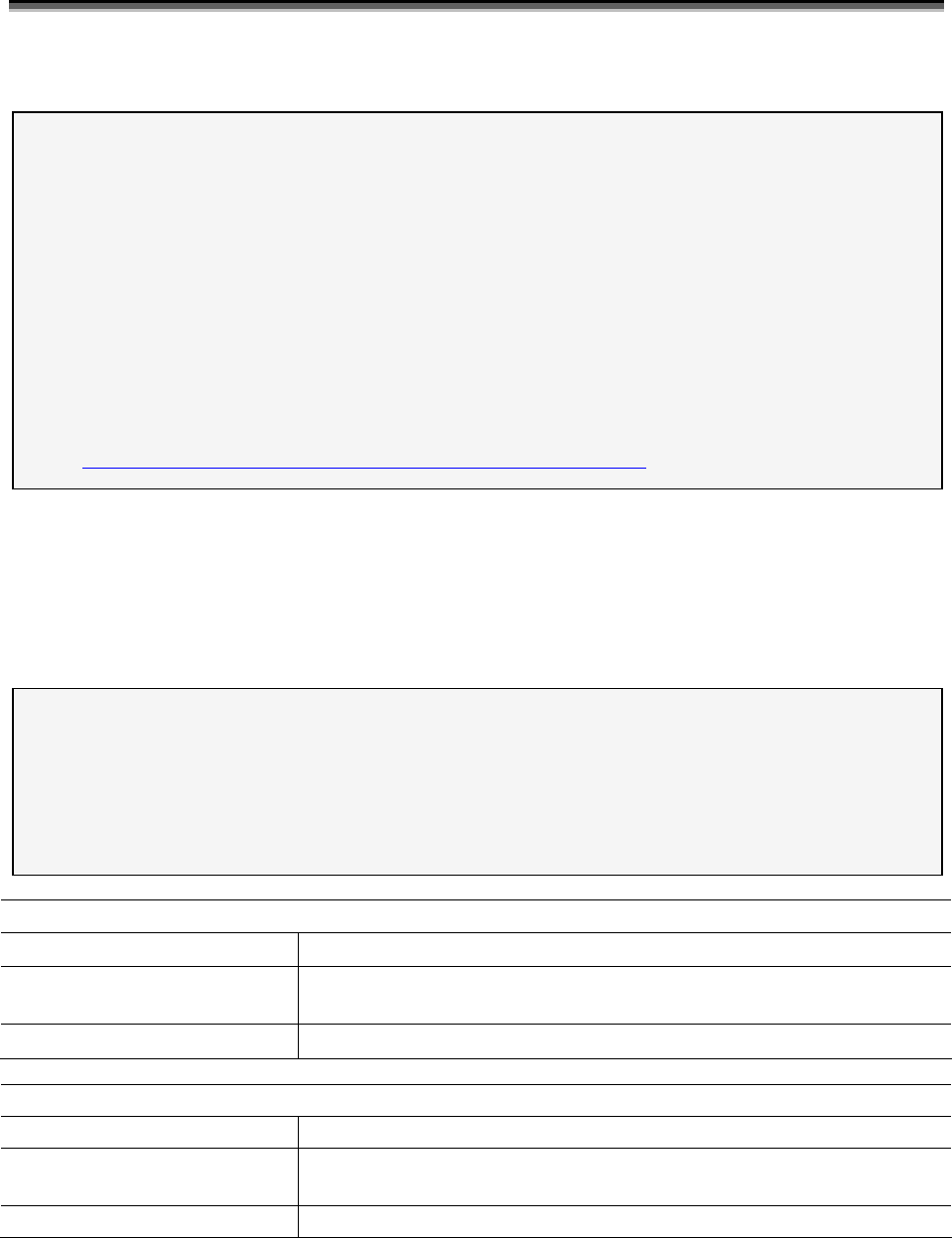
Construction Best Management Practices Plan (CBMPP)
INSERT PROJECT NAME and DATE
CBMPP Template, Version 1.1, September 2009 27
3.6 Spill Prevention, Control and Management
INSERT TEXT HERE or REFERENCE ATTACHMENT
3.7 Any Additional BMPs
BMP Description:
Installation Schedule:
Maintenance and
Inspection:
Responsible Staff:
BMP Description:
Installation Schedule:
Maintenance and
Inspection:
Responsible Staff:
Repeat as needed
Instructions:
― Describe any additional BMPs that do not fit into the above categories. Indicate the problem they are
intended to address.
― Consult the Alabama Handbook for Erosion Control, Sediment Control and Stormwater Management on
Construction Sites and Urban Areas June 2003 (Revised, 03/09)
Instructions:
― A Spill Prevention, Control and Countermeasures (SPCC) Plan as set forth at 40 CFR Part 112 is required
for petroleum products. The SPCC Plan should be prepared as a separate document or as a component
of the CBMPP.
― In accordance with ADEM Admin. Code rs. 335-6-6-.12 and 335-6-12-.29 spill prevention, control and
management must be provided for any product which in the event of a release has the potential to impact
waters of the state (including groundwater) or the collection system of a publicly or privately owned
treatment works.
― Describe the spill prevention and control plan to include ways to reduce the chance of spills, stop the
source of spills, contain and clean up spills, dispose of materials contaminated by spills, and train
personnel responsible for spill prevention and control.
― Also, see EPA’s Spill Prevention and Control Plan BMP Fact sheet at
www.epa.gov/npdes/stormwater/menuofbmps/construction/spill_control
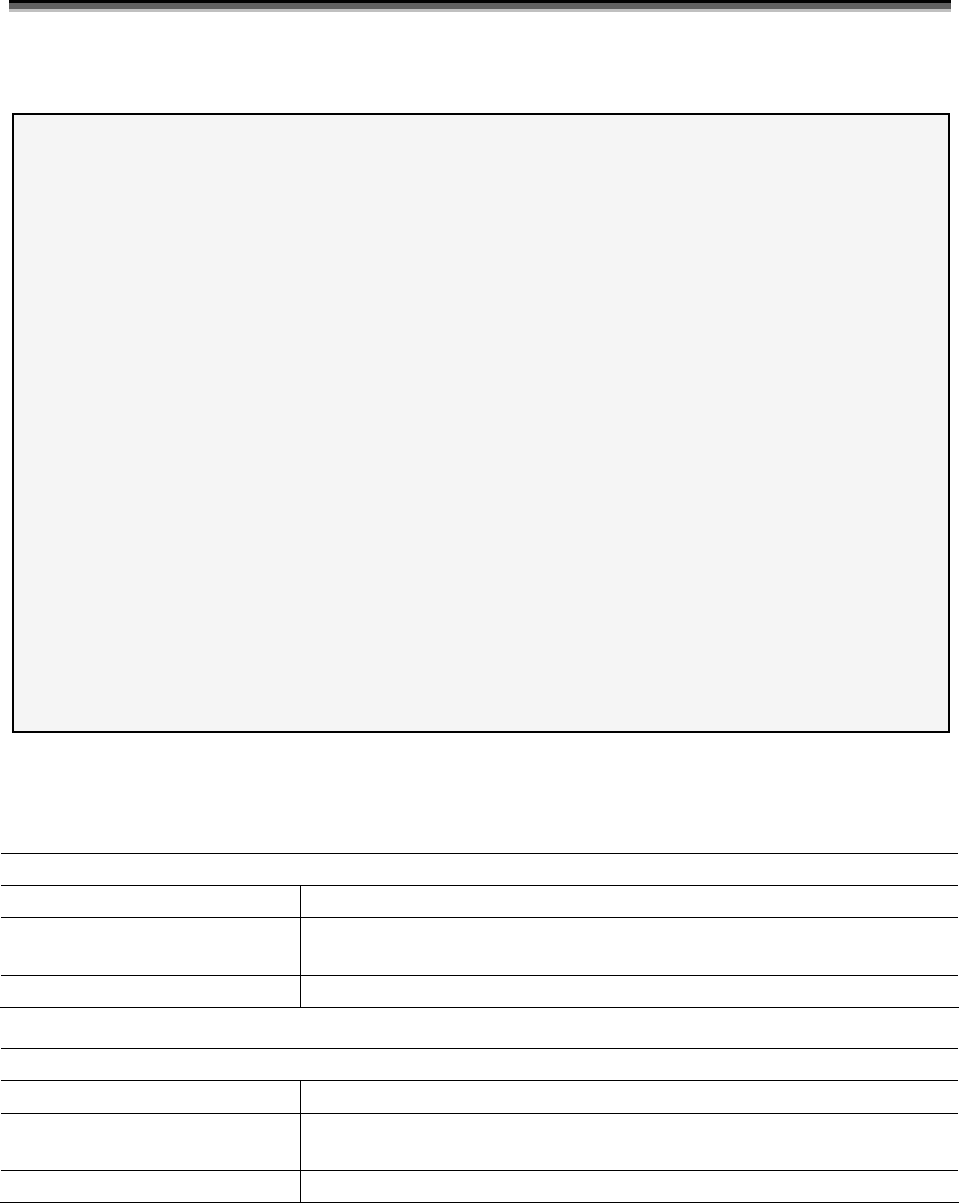
Construction Best Management Practices Plan (CBMPP)
INSERT PROJECT NAME and DATE
CBMPP Template, Version 1.1, September 2009 28
3.8 Non-Stormwater Discharge Management
List non-stormwater discharges and the measures used to eliminate or reduce them and to prevent them from
becoming contaminated:
BMP Description:
Installation Schedule:
Maintenance and
Inspection:
Responsible Staff:
BMP Description:
Installation Schedule:
Maintenance and
Inspection:
Responsible Staff:
Repeat as needed
Instructions:
― Identify all other sources of non-stormwater discharges that are not identified. The non-stormwater
discharges identified might include the following (see your permit for an exact list):
9 Waters used to wash vehicles where detergents are not used
9 Water used to control dust
9 De-chlorinated potable water including uncontaminated water line flushings
9 Routine external building wash down that does not use detergents
9 Pavement wash waters where spills or leaks of toxic or hazardous materials have not occurred
(unless all spilled material has been removed) and where detergents are not used
9 Uncontaminated air conditioning or compressor condensate
9 Uncontaminated ground water or spring water
9 Foundation or footing drains where flows are not contaminated with process materials such as
solvents
9 Uncontaminated excavation dewatering
9 Landscape irrigation
― Identify measures used to eliminate or reduce these discharges and the BMPs used to prevent them from
becoming contaminated.
― Also, see ADEM Administrative Code chapters 335-6-5 and 335-6-6 for applicable SID and NPDES permit
requirements and ADEM Administrative Code r. 335-6-12-.02(c)2. and 335-6-12-.02(e) for construction
associated de minimus non-stormwater and process wastewater discharges.
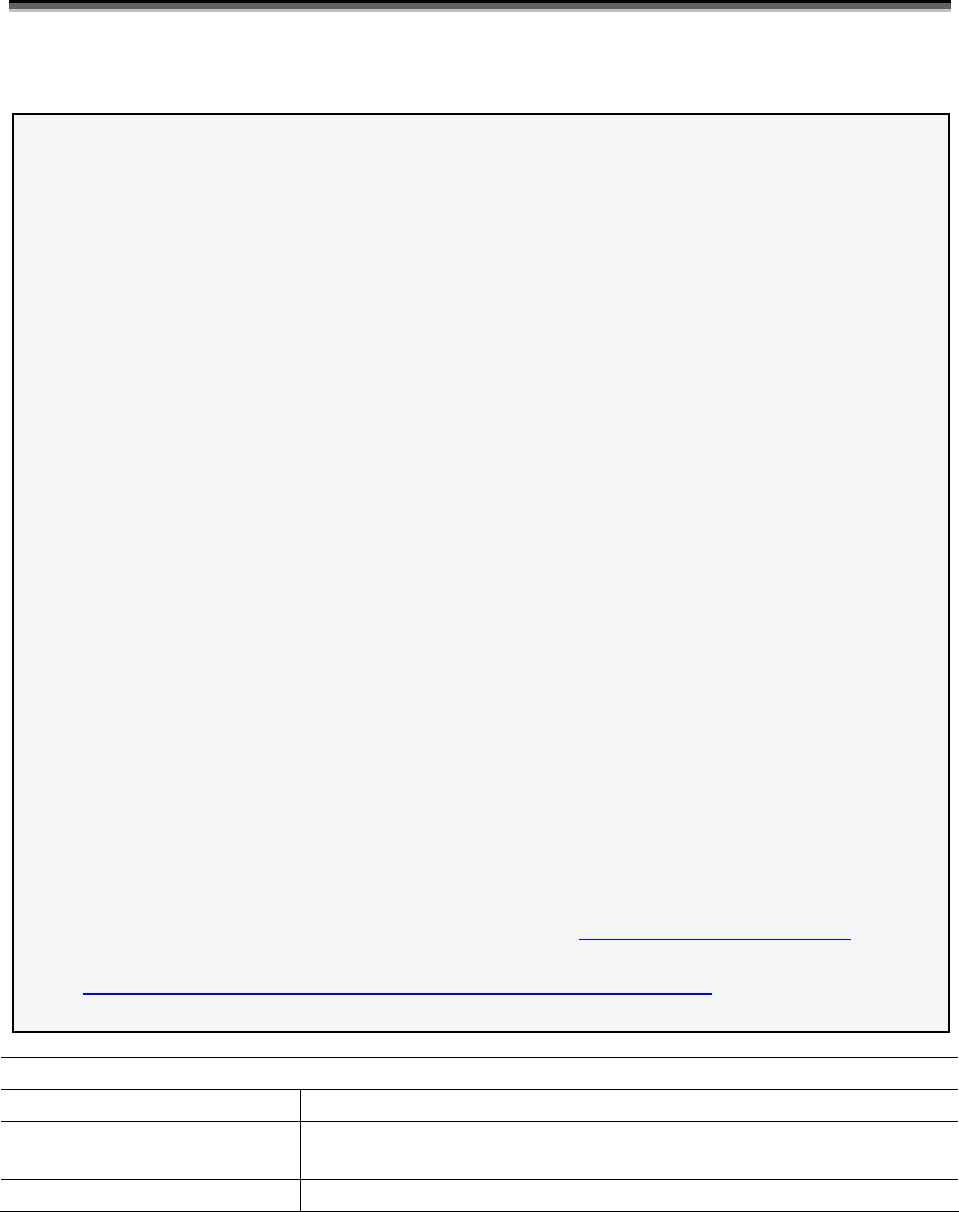
Construction Best Management Practices Plan (CBMPP)
INSERT PROJECT NAME and DATE
CBMPP Template, Version 1.1, September 2009 29
SECTION 4: SELECTING POST-CONSTRUCTION BMPs
BMP Description:
Installation Schedule:
Maintenance and
Inspection:
Responsible Staff:
Instructions:
― Describe all post-construction stormwater management measures that will be installed during the
construction process to control pollutants in stormwater discharges after construction operations have
been completed. Selection of the appropriate BMPs relies upon the proper characterization of the project
site and accurate evaluation of the anticipated erosion and the effectiveness of proposed erosion and
sediment control practices. The NRCS Revised Universal Soil Loss Equation Version 2 (RUSLE2) model
is a useful modeling tool in estimating erosion rates and sediment yield. There are several benefits of
using RUSLE2, specifically the ability to use a quantitative iterative process to select the most appropriate
combination of permanent and temporary Best Management Practices (BMPs) for soil stabilization and
erosion and sedimentation control during the construction and post-construction project phases.
― Examples of post-construction BMPs/LIDS (low impact development designs) include the following:
9 Biofilters
9 Bioretention
9 Detention/retention devices
9 Earth dikes, drainage swales, and lined ditches
9 Green Roofs
9 Infiltration basins
9 Porous pavement
9 Other proprietary permanent structural BMPs
9 Outlet protection/velocity dissipation devices
9 Slope protection
9 Vegetated strips and/or swales
― Identify any applicable federal, state, or local requirements for design or installation.
― Describe how low-impact designs or smart growth considerations have been incorporated into the design.
― For any structural BMPs, you should have design specifications and details and refer to them. Attach
them as appendices to the CBMPP or within the text of the CBMPP.
― Consult the Alabama Handbook for Erosion Control, Sediment Control and Stormwater Management on
Construction Sites and Urban Areas June 2003 (Revised, 03/09)
― Visit the post-construction section of EPA’s Menu of BMPs at: www.epa.gov/npdes/menuofbmps
― For more information regarding the NRCS RUSLE2, see
http://fargo.nserl.purdue.edu/rusle2_dataweb/About_RUSLE2_Technology.htm

Construction Best Management Practices Plan (CBMPP)
INSERT PROJECT NAME and DATE
CBMPP Template, Version 1.1, September 2009 30
BMP Description:
Installation Schedule:
Maintenance and
Inspection:
Responsible Staff:
Repeat as needed
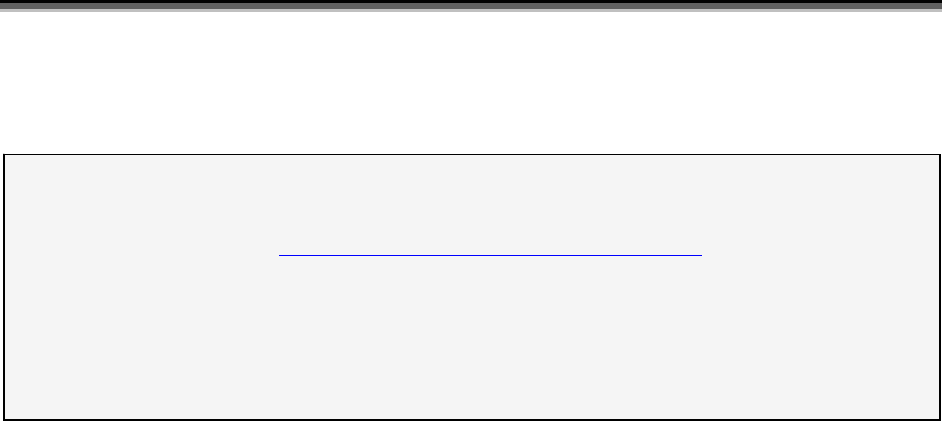
Construction Best Management Practices Plan (CBMPP)
INSERT PROJECT NAME and DATE
CBMPP Template, Version 1.1, September 2009 31
SECTION 5: INSPECTIONS
5.1 Inspections
1. Inspection Personnel: Identify the person(s) who will be responsible for conducting
inspections and describe their qualifications:
2. Inspection Schedule and Procedures:
Describe the inspection schedules and procedures you have developed for your site
(include frequency of inspections for each BMP or group of BMPs, indicate when you will
inspect, e.g., before/during/and after rain events, spot inspections):
Describe the general procedures for correcting problems when they are identified. Include
responsible staff and time frames for making corrections:
Attach a copy of ADEM Form 500.
REFERENCE ATTACHMENT
Instructions:
― Identify the individual(s) responsible for conducting inspections and describe their qualifications. ADEM
Form 500 must be used. http://www.adem.state.al.us/DeptForms/Formpdf.htm
― Pending your activity and following ADEM Admin. Code chap. 335-6-12; describe the frequency that
inspections will occur at your site including any correlations to storm frequency and intensity.
― Note that inspection details for particular BMPs should be included in Sections 2 and 3.
― You should also document the repairs and maintenance that you undertake as a result of your inspections.
These actions can be documented in the corrective action log described in Part 5.3 below.
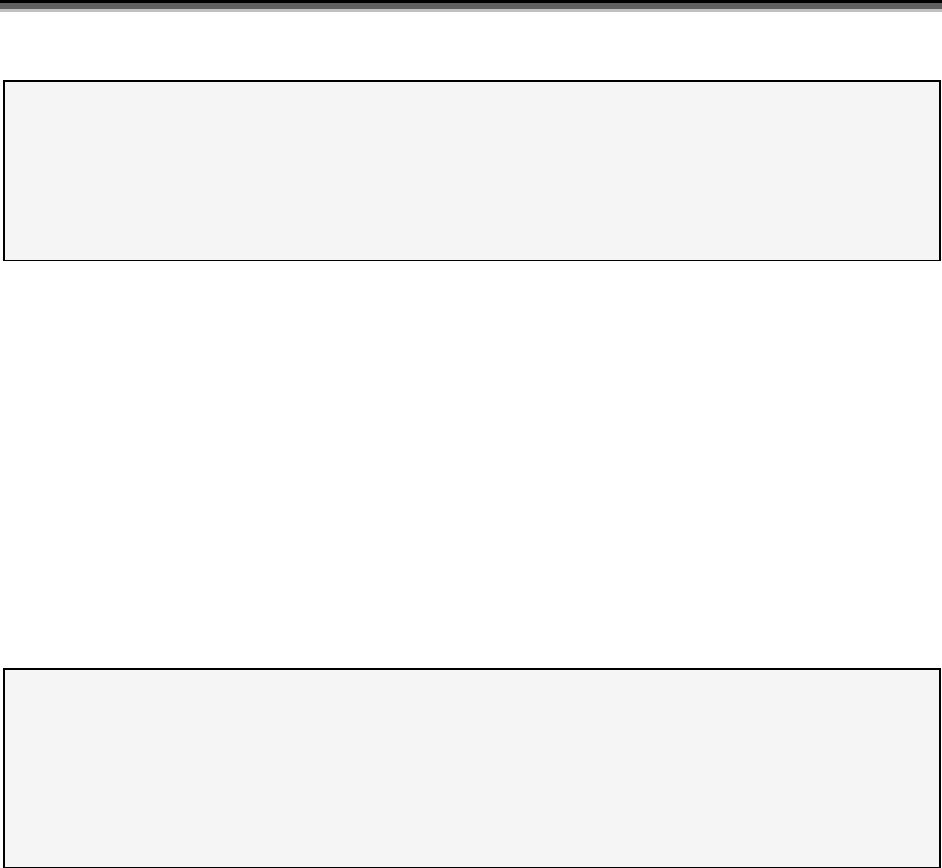
Construction Best Management Practices Plan (CBMPP)
INSERT PROJECT NAME and DATE
CBMPP Template, Version 1.1, September 2009 32
5.2 Delegation of Authority
Duly Authorized Representative(s) or Position(s):
Insert Company or Organization Name:
Insert Name:
Insert Position:
Insert Address:
Insert City, State, Zip Code:
Insert Telephone Number:
Insert Fax/Email:
Attach a copy of the signed delegation of authority form in Appendix J.
5.3 Corrective Action Log
Corrective Action Log:
INSERT LOG HERE or REFERENCE ATTACHMENT
Instructions:
― Create here, or as an attachment, a corrective action log. This log should describe repair, replacement,
and maintenance of BMPs undertaken as a result of the inspections and maintenance procedures
described above. Actions related to the findings of inspections should reference the specific inspection
report.
― This log should describe actions taken; date completed, and note the person that completed the work.
Instructions:
― Identify the individual(s) or specifically describe the position where the responsible official has delegated
authority for the purposes of signing inspection reports, certifications, or other information. (Reference
ADEM Administrative Code r. 335-6-6-.09)
― Attach the delegation of authority form that will be used.

Construction Best Management Practices Plan (CBMPP)
INSERT PROJECT NAME and DATE
CBMPP Template, Version 1.1, September 2009 33
SECTION 6: RECORDKEEPING AND TRAINING
6.1 Recordkeeping
Records will be retained for a minimum period of at least 3 years after the permit is terminated.
Date(s) when major grading activities occur:
INSERT LOG HERE or REFERENCE ATTACHMENT
Date(s) when construction activities temporarily or permanently cease on a portion of the site:
INSERT LOG HERE or REFERENCE ATTACHMENT
Date(s) when an area is either temporarily or permanently stabilized:
INSERT LOG HERE or REFERENCE ATTACHMENT
6.2 Log of Changes to the CBMPP
Log of changes and updates to the CBMPP
INSERT LOG HERE or REFERENCE ATTACHMENT
Instructions:
― Create a log here, or as an attachment, of changes and updates to the CBMPP. You should include
additions of new BMPs, replacement of failed BMPs, significant changes in the activities or their tim
ing on
the project, changes in personnel, changes in inspection and maintenance procedures, updates to site
maps, and so on.
Instructions:
― The following is a list of records you should keep at your project site available for inspectors to review:
― Dates of grading, construction activity, and stabilization (which is covered in Sections 2 and 3)
― The signed and certified NOR form or permit application form (attach)
― A copy of the letter from ADEM acknowledging receipt of your complete NOR/application (attach)
― Inspection reports (attach)
― Rainfall data (Reference ADEM Administrative Code r. 335-6-12-.26(4) which requires precipitation
measurement in tenths of an inch using continuous recorders or daily readings of a precipitation gauge.)
― Copy of your CBMPP Plan.
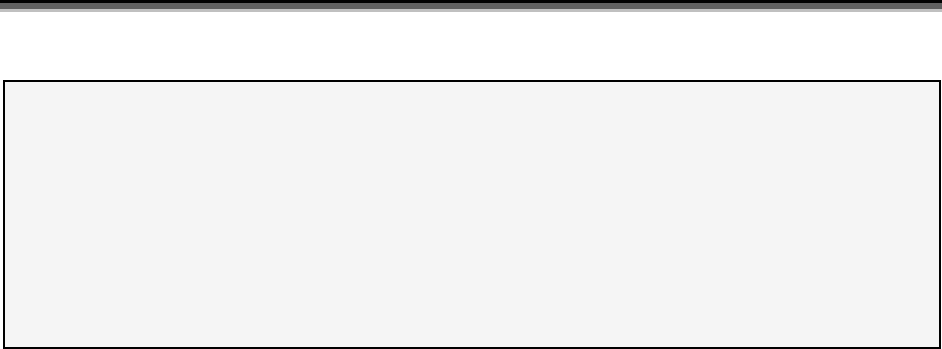
Construction Best Management Practices Plan (CBMPP)
INSERT PROJECT NAME and DATE
CBMPP Template, Version 1.1, September 2009 34
6.3 Training
Individual(s) Responsible for Training:
INSERT TEXT or TABLE HERE
Describe Training Conducted:
• General stormwater and BMP awareness training for staff and subcontractors:
• Detailed training for staff and subcontractors with specific stormwater responsibilities:
Instructions:
― Training your staff and subcontractors is an effective BMP. As with the other steps you take to prevent
stormwater problems at your site, you should document the training that you conduct for your staff, for
those with specific stormwater responsibilities (e.g. installing, inspecting, and maintaining BMPs), and for
subcontractors.
― Include dates, number of attendees, subjects covered, and length of training.
― Training includes, but is not limited to, the Qualified Credentialed Inspection Training (QCIP) program.
Additional training may be necessary.
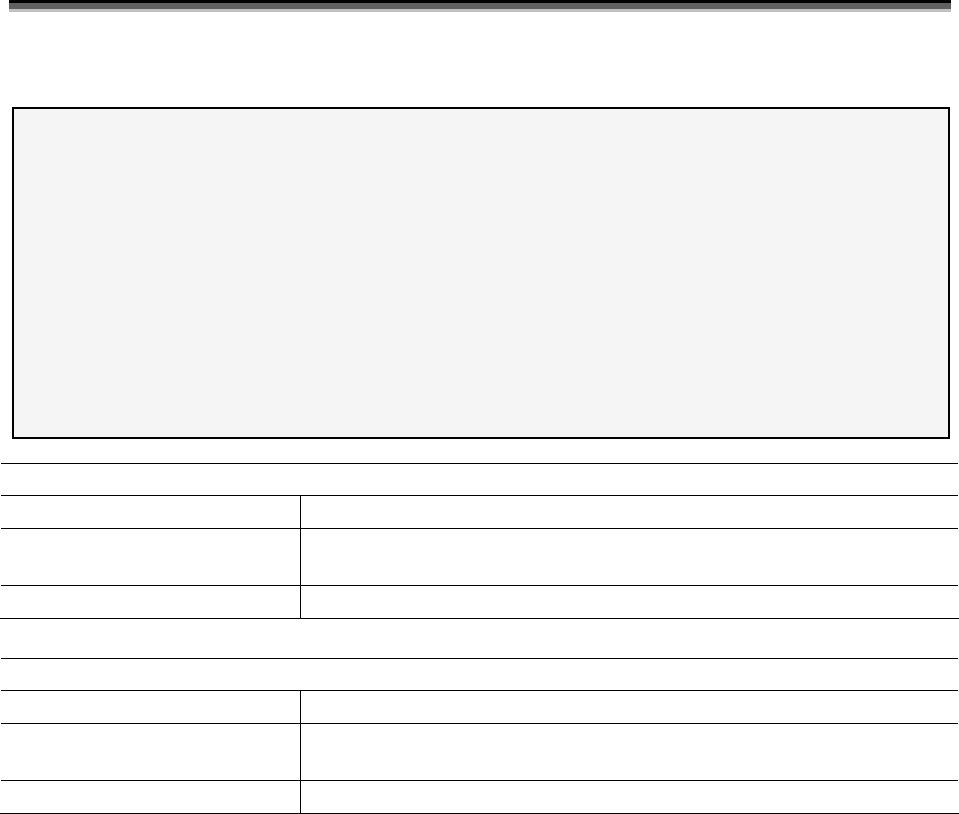
Construction Best Management Practices Plan (CBMPP)
INSERT PROJECT NAME and DATE
CBMPP Template, Version 1.1, September 2009 35
SECTION 7: FINAL STABILIZATION
BMP Description:
Installation Schedule:
Maintenance and
Inspection:
Responsible Staff:
BMP Description:
Installation Schedule:
Maintenance and
Inspection:
Responsible Staff:
Repeat as needed
Instructions:
― Describe procedures for final stabilization. If you complete major construction activities on part of your
site, you can document your final stabilization efforts for that portion of the site. Discontinuing inspections
can be approved upon submittal of inspection reports of subject area(s), certification of complete
stabilization and NOR requesting modification of existing authorization to remove subject area(s) from
coverage.
― Update your site plans to indicate areas that have achieved final stabilization.
― Note that dates for areas that have achieved final stabilization should be included in the CBMPP.
― Consult the Alabama Handbook for Erosion Control, Sediment Control and Stormwater Management on
Construction Sites and Urban Areas June 2003 (Revised, 03/09)
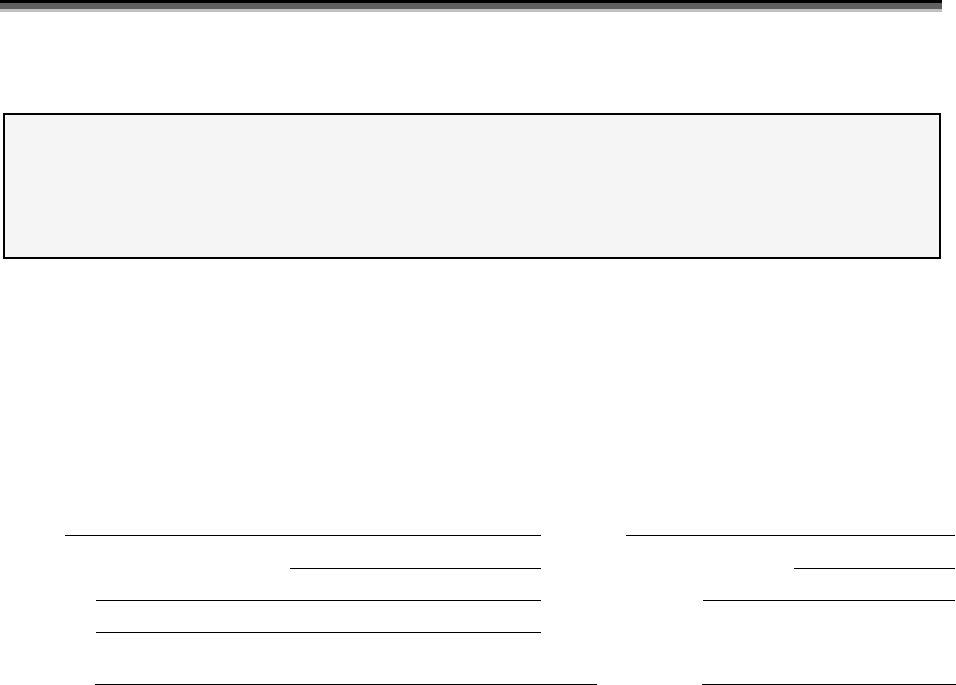
Construction Best Management Practices Plan (CBMPP)
INSERT PROJECT NAME and DATE
CBMPP Template, Version 1.1, September 2009 36
SECTION 8: CERTIFICATION AND NOTIFICATION
I certify under penalty of law that this document and all attachments were prepared
under my direction or supervision in accordance with a system designed to assure that qualified
personnel properly gathered and evaluated the information submitted. Based on my inquiry of
the person or persons who manage the system, or those persons directly responsible for
gathering the information, the information submitted is, to the best of my knowledge and belief,
true, accurate, and complete. I am aware that there are significant penalties for submitting false
information, including the possibility of fine and imprisonment for knowing violations.
Name: Title:
QCP Designation/Description: Registration/Certification:
Address: Phone Number:
Signature: Date:
Instructions:
― In accordance with ADEM Administrative Code r. 335-6-12-.21 the CBMPP should be signed and certified
by a QCP. Attach a copy of the NOR and permit authorization letter received from the State in Appendix
C.

Construction Best Management Practices Plan (CBMPP)
INSERT PROJECT NAME and DATE
CBMPP Template, Version 1.1, September 2009 37
CBMPP APPENDICES
Attach the following documentation to the CBMPP:
Appendix A – General Location Map
Appendix B – Site Maps
Appendix C – NOR and Acknowledgement Letter from ADEM
Appendix D – Inspection Reports
Appendix E - Change in Runoff Volume for 2-Yr, 24-hr Storm
Event and Hydrograph (see Part 1.5)
Appendix F – Corrective Action Log (or in Part 5.3)
Appendix G – CBMPP Amendment Log (or in Part 6.2)
Appendix H – Grading and Stabilization Activities Log (or in Part
6.1)
Appendix I – Training Log (Optional)
Appendix J – Delegation of Authority
Appendix K – Additional Information (i.e., Endangered Species,
Historic Preservation, and U.S. Corps of Engineers
Documentation)

Construction Best Management Practices Plan (CBMPP)
INSERT PROJECT NAME and DATE
CBMPP Template, Version 1.1, September 2009 38
Appendix A – General Location Map
[INSERT MAP HERE]

Construction Best Management Practices Plan (CBMPP)
INSERT PROJECT NAME and DATE
CBMPP Template, Version 1.1, September 2009 39
Appendix B – Site Maps
[INSERT MAPS HERE]

Construction Best Management Practices Plan (CBMPP)
INSERT PROJECT NAME and DATE
CBMPP Template, Version 1.1, September 2009 40
Appendix C – NOR and Acknowledgement Letter from ADEM
[INSERT DOCUMENTS HERE]

Construction Best Management Practices Plan (CBMPP)
INSERT PROJECT NAME and DATE
CBMPP Template, Version 1.1, September 2009 41
Appendix D – Inspection Reports
[INSERT REPORTS HERE]

Construction Best Management Practices Plan (CBMPP)
INSERT PROJECT NAME and DATE
CBMPP Template, Version 1.1, September 2009 42
Appendix E – Discussion of Storm Water Methodologies for Part 1.5
There are many methodologies developed to estimate the total runoff volume, the peak rate of
runoff, and the runoff hydrograph from land surfaces under a variety of conditions. This section
describes some of the methods that are most widely used. It is not a complete list of
procedures.
There are a wide variety of computer models available for performing stormwater calculations.
The computer models use one of more calculation methodologies to estimate runoff
characteristics. The procedures most commonly used in computer models are the same ones
discussed below.
Existing Methodologies for Runoff Volume Calculations
(1) Runoff Curve Number Method
The runoff curve number method is the most commonly used tool for estimating runoff volumes.
In this method, runoff is calculated based on precipitation, curve number, watershed storage,
and initial abstraction. When rainfall is greater than the initial abstraction, runoff is given by
(NRCS, 1986):
()
()
SIP
IP
Q
a
a
+−
−
=
2
Where: Q = runoff (in.)
P = rainfall (in.)
I
a
= initial abstraction (in.)
S = potential maximum retention after runoff begins (in.)
Initial abstraction (I
a
) includes all losses before the start of surface runoff: depression storage,
interception, evaporation, and infiltration. I
a
can be highly variable but it can be empirically
approximated by:
SI
a
20.=
Therefore, the runoff equation becomes:
()
()
SP
SP
Q
80
20
2
.
.
+
−
=
Finally, S is a function of the watershed soil and cover conditions as represented by the runoff
curve number (CN):
10
1000
−=
CN
S
Therefore, runoff can be calculated using only the curve number and rainfall. Curve numbers
are determined by land cover type, hydrologic condition, antecedent moisture condition (AMC),
and hydrologic soil subgroup (HSG). Curve numbers for various land covers based on an
average AMC for annual floods and I
a
= 0.2S can be found in Urban Hydrology for Small
Watersheds (Soil Conservation Service, 1986) and various other references.
Often a single, area-weighted CN is used to represent a watershed consisting of sub-areas with
different CNs. While this approach is acceptable if the CNs are similar, if the difference in CNs
is more than 5 the use of a weighted CN significantly reduces the estimated amount of runoff

Construction Best Management Practices Plan (CBMPP)
INSERT PROJECT NAME and DATE
CBMPP Template, Version 1.1, September 2009 43
from the watershed. This is especially problematic with pervious/impervious combinations.
Therefore, the runoff from different sub-areas should be calculated separately and then
combined or weighted appropriately.
The CN method is less accurate for storms that generate less than 0.5 inches of runoff. An
alternate method for calculating runoff from small storms is the Small Storm Hydrology Method
(SSHM).
Existing Methodologies for Peak Rate/Hydrograph Estimations
Numerous hydrologic methods are available for estimating peak discharges and runoff
hydrographs. The omission of other methods from this manual does not necessarily preclude
their use. Determine which method seems to be the most reasonable for the specific situation.
Here are some of the most widely used methods:
• Rational Method
• NRCS Runoff Curve Number Methods
• USGS Regional Regression Equations.
(1) The Rational Method
The Rational Method can be used to estimate peak runoff rates from relatively small, highly
developed drainage areas (generally less than 200 acre drainage area). The peak runoff rate
from a given drainage area is given by:
AICQ
y
××=
Where: Q
y
= peak runoff rate (cfs)
C = the runoff coefficient of the area (dimensionless)
I = the average rainfall intensity (in/hr) for storm with a duration equal to the
time of concentration (t
c
) of the area
A = the size of the drainage area (acres)
Although it is a simple and straightforward method, estimating both the time of concentration (t
c
)
and runoff coefficient introduce considerable uncertainty in the calculated peak runoff rate. In
addition, the method was developed for relatively frequent events so the peak rate as calculated
above should be increased for more extreme events. For these reasons, the Rational Method
should be used only to predict peak runoff rate for very small (e.g. ≤200 acres), highly
impervious areas (e.g. t
c
≤ 15 minutes).
(2) SCS (NRCS) Unit Hydrograph Method
NRCS has developed a system to estimate peak runoff rates and runoff hydrographs using a
dimensionless unit hydrograph. The NRCS methodologies are available in several public
domain computer models including TR-55 (WinTR-55) computer model, Technical Release 20
(TR-20); Computer Program for Project Formulation Hydrology, and in addition, the U.S. Army
Corp of Engineers’ Hydrologic Modeling System (HEC-HMS), NRCS NEH 650 Engineering
Handbook EFH2, and the U.S. EPA’s Storm Water Management Model (SWMM).

Construction Best Management Practices Plan (CBMPP)
INSERT PROJECT NAME and DATE
CBMPP Template, Version 1.1, September 2009 44
(3) USGS Regional Regression Equations
To provide simple methods of estimating flood-peak discharges, the U.S. Geological Survey
(USGS) has developed and published equations for every State, the Commonwealth of Puerto
Rico, and a number of metropolitan areas in the United States. For more information reference
The National Flood-Frequency Program-Methods for Estimating Flood Magnitude and
Frequency in Rural and Urban Areas in Alabama (USGS Fact Sheet 088-97, June 1999). A
copy of the USGS Fact Sheet 088-97 is available online at: http://pubs.usgs.gov/fs/fs-088-97/
.
Precipitation Data for Stormwater Calculations
Current precipitation frequency information and documents are available from NOAA's National
Weather Service Hydrometeorological Design Studies Center online at:
http://hdsc.nws.noaa.gov/hdsc/pfds/other/al_pfds.html
. These rainfall estimates are
recommended for all applicable stormwater calculations.
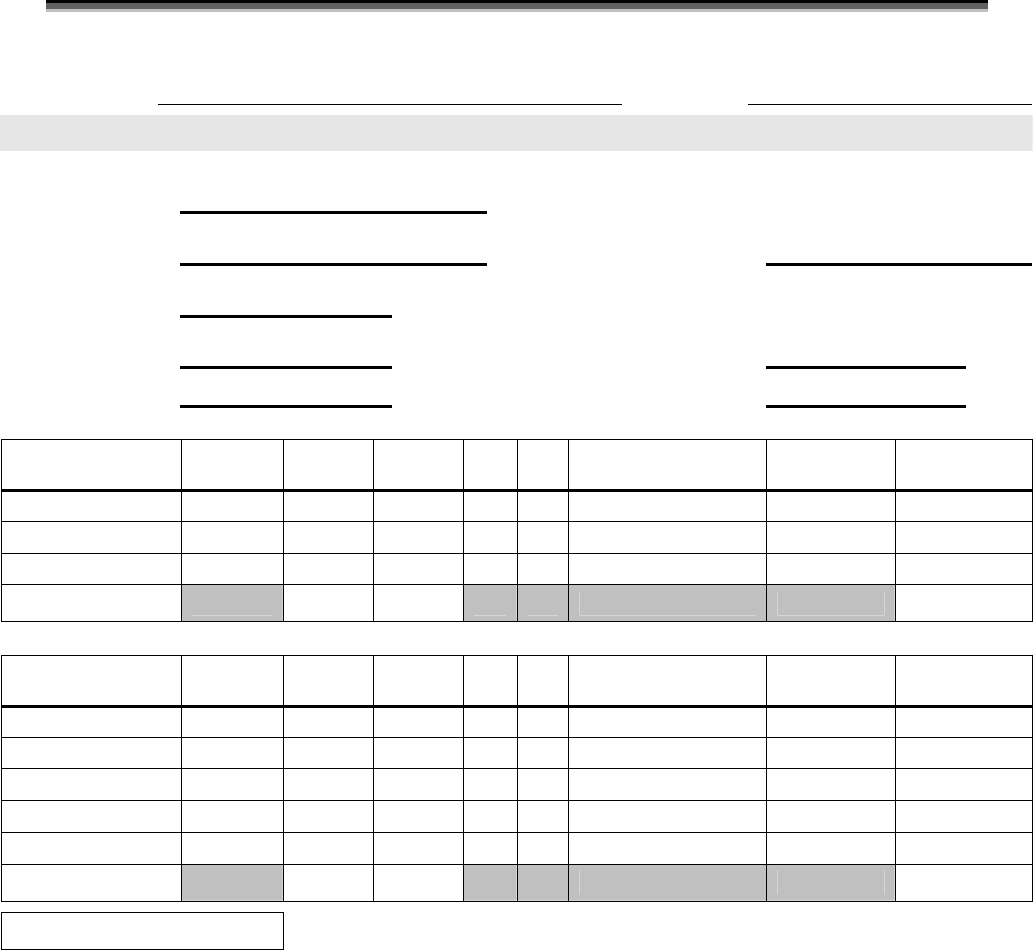
Construction Best Management Practices Plan (CBMPP)
INSERT PROJECT NAME and DATE
CBMPP Template, Version 1.1, September 2009 45
Appendix E – Sample Worksheet (for Part 1.5) (Calculate for each outfall)
CBMPPContact:OutfallNo.:
CHANGEINRUNOFFVOLUMEFOR2‐YR,24‐HRSTORMEVENTWORKSHEET
PROJECTName
ReceivingStream
DrainageArea(s)
ReceivingStreamName
2‐Year,24‐Hr
Rainfall
inches
TotalSiteArea:
acres
TotalOutfallDrainageArea:
acres
DisturbedArea:
acres
TotalOutfallDisturbedArea:
acres
Pre‐constructionConditions:
CoverType/Condition
SoilType Area(sf) Area(ac) CN S la(0.2*S) QRunoff
1
(in)
RunoffVolume
2
(ft
3
)
ExampleWoodland
ExampleMeadow
ExampleImpervious
TOTAL:
Post‐constructionConditions:
CoverType/Condition
SoilType Area(sf) Area(ac) CN S la(0.2*S) QRunoff
1
(in)
RunoffVolume
2
(ft
3
)
TOTAL:
2‐YearVolumeIncrease(ft
3
):
2‐YearVolumeIncrease=Post‐ConstructionConditionsRunoffVolume–Pre‐ConstructionConditionsRunoffVolume
1.Runoff(in)=Q=(P–0.2S)
2
/(P+0.8S)where
P=2‐Year,24‐Hr
Rainfall(in)
S=(1000/CN)‐10
2.RunoffVolume(CF)=QxAreax1/12
Q=Runoff(in)
Area=Landusearea
(sf)
Note:RunoffVolumemustbecalculatedforEACHlanduse
type/conditionandsoil.
TheuseofaweightedCNvalueforvolumecalculationsisnotacceptable.
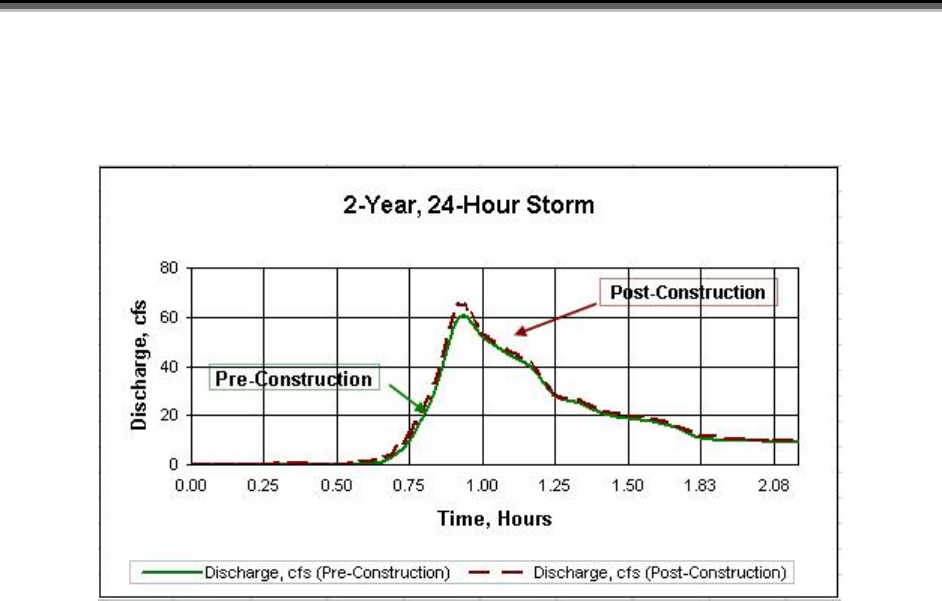
Construction Best Management Practices Plan (CBMPP)
INSERT PROJECT NAME and DATE
CBMPP Template, Version 1.1, September 2009 46
Appendix E Continued
Site hydrograph generation under pre- and post-construction site conditions with
appropriate design for 2-year, 24-hour Storm.
Figure 1 Example Site Hydrograph for Inclusion in CBMPP
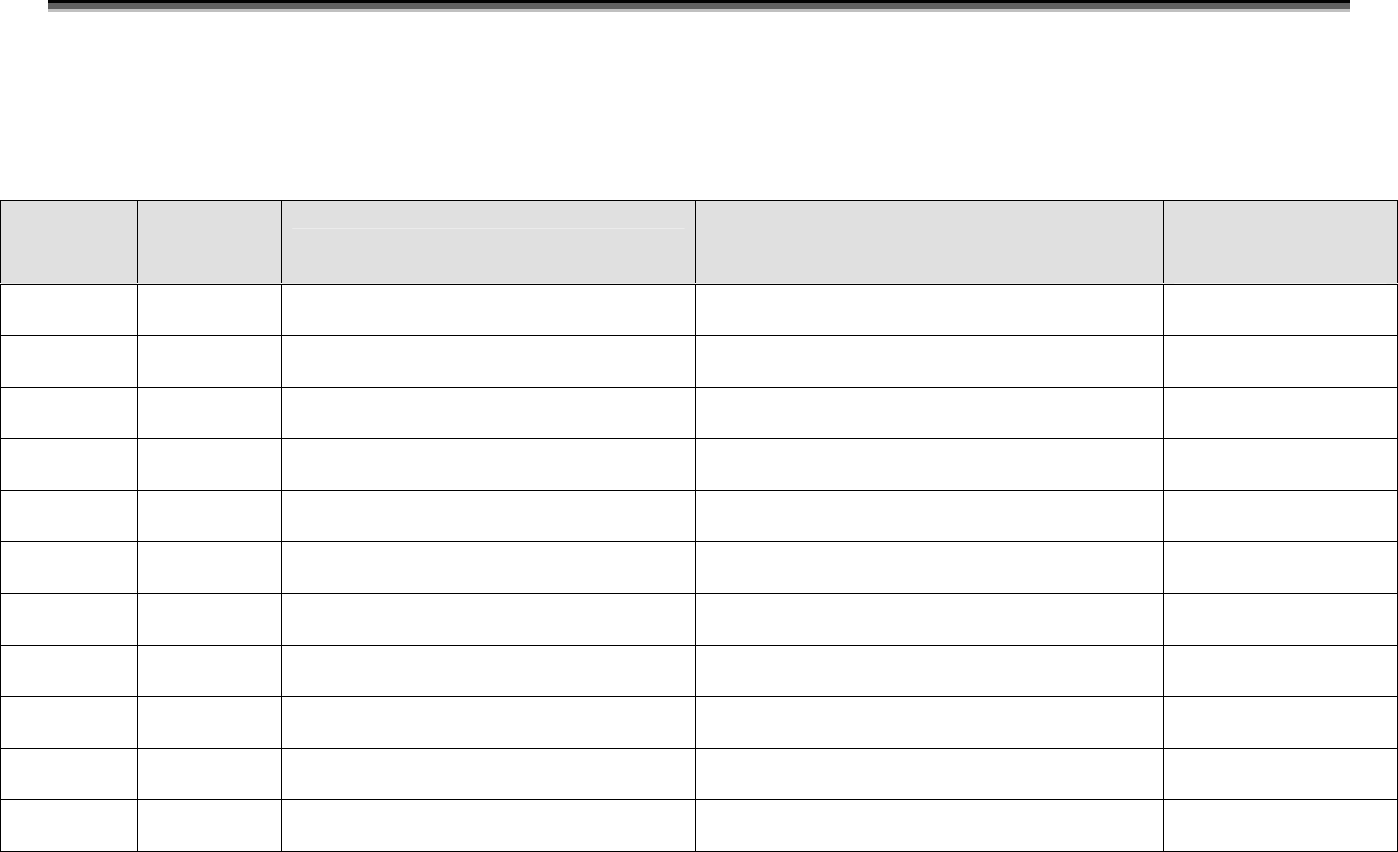
Construction Best Management Practices Plan (CBMPP)
INSERT PROJECT NAME and DATE
CBMPP Template, Version 1.1, September 2009 47
Appendix F – Sample Corrective Action Log
Project Name:
CBMPP Contact:
Inspection
Date
Inspector
Name(s)
Description of BMP Deficiency Corrective Action Needed (including planned
date/responsible person)
Date Action
Taken/Responsible
person
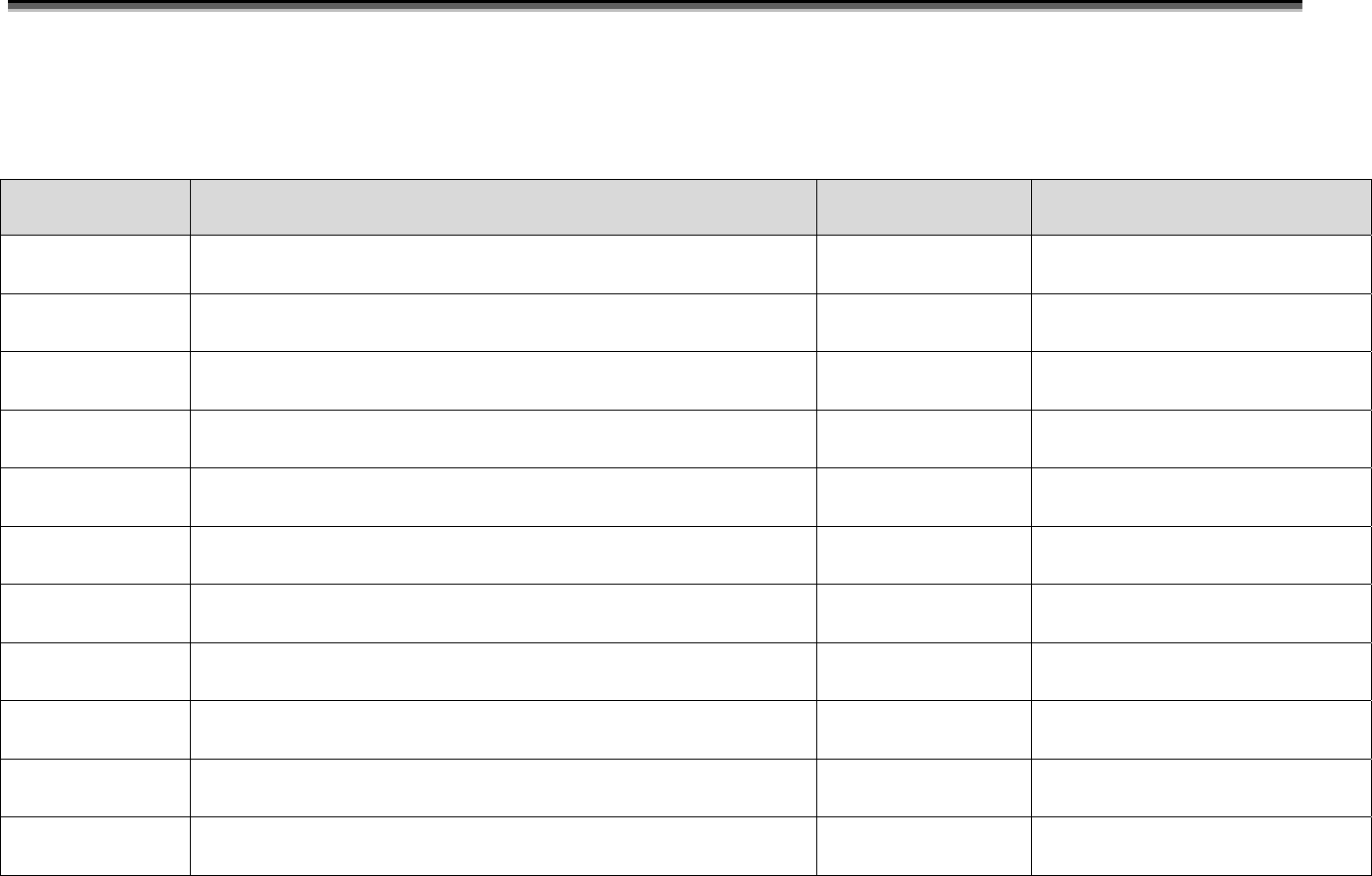
Construction Best Management Practices Plan (CBMPP)
INSERT PROJECT NAME and DATE
CBMPP Template, Version 1.1, September 2009 48
Appendix G – Sample CBMPP Amendment Log
Project Name:
CBMPP Contact:
Amendment No. Description of the Amendment Date of Amendment Amendment Prepared by
[Name(s) and Title]
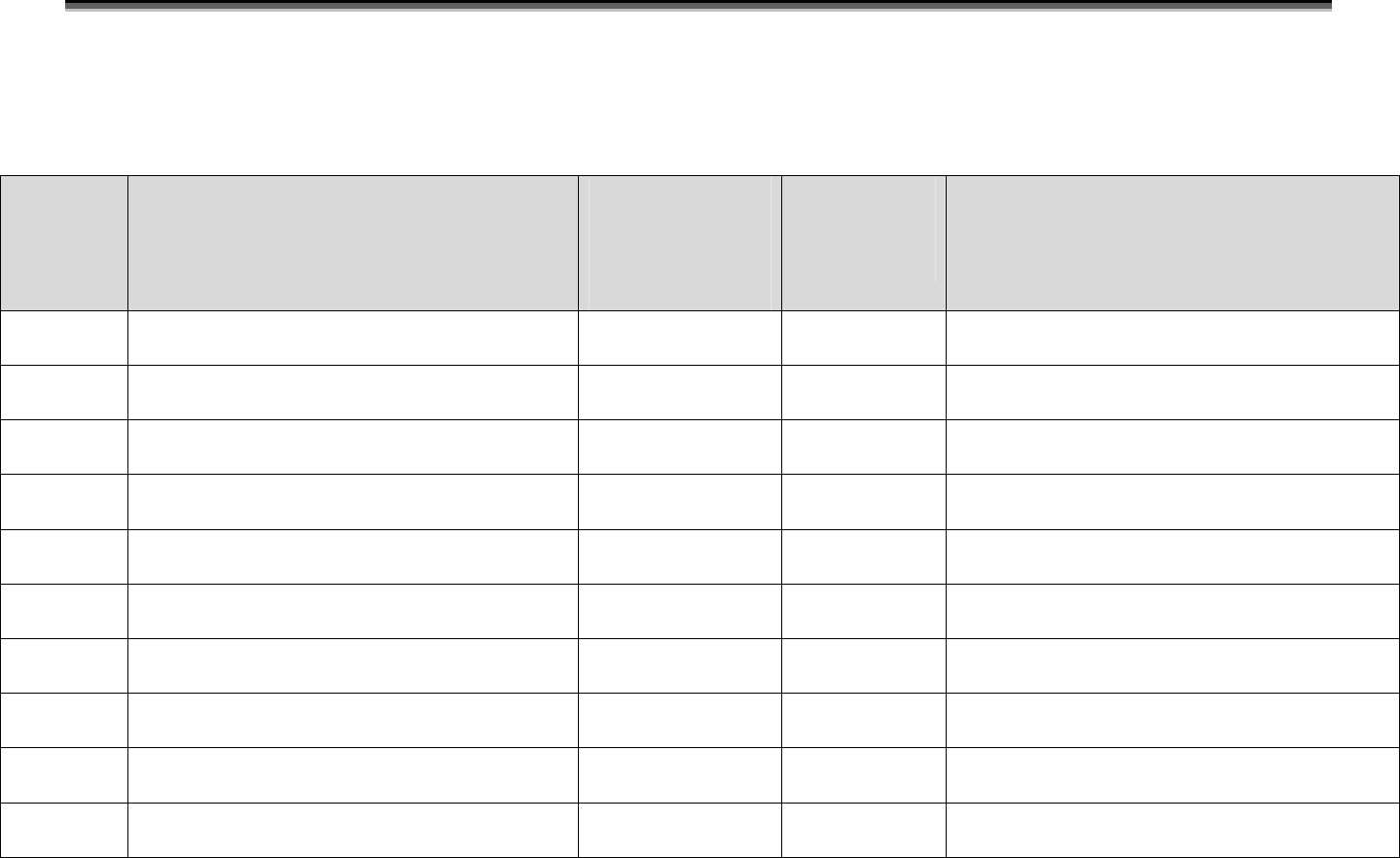
Construction Best Management Practices Plan (CBMPP)
INSERT PROJECT NAME and DATE
CBMPP Template, Version 1.1, September 2009 49
Appendix H – Sample Grading and Stabilization Activities Log
Project Name:
CBMPP Contact:
Date
Grading
Activity
Initiated
Description of Grading Activity Date Grading
Activity Ceased
(Indicate
Temporary or
Permanent)
Date When
Stabilization
Measures are
Initiated
Description of Stabilization Measure and
Location
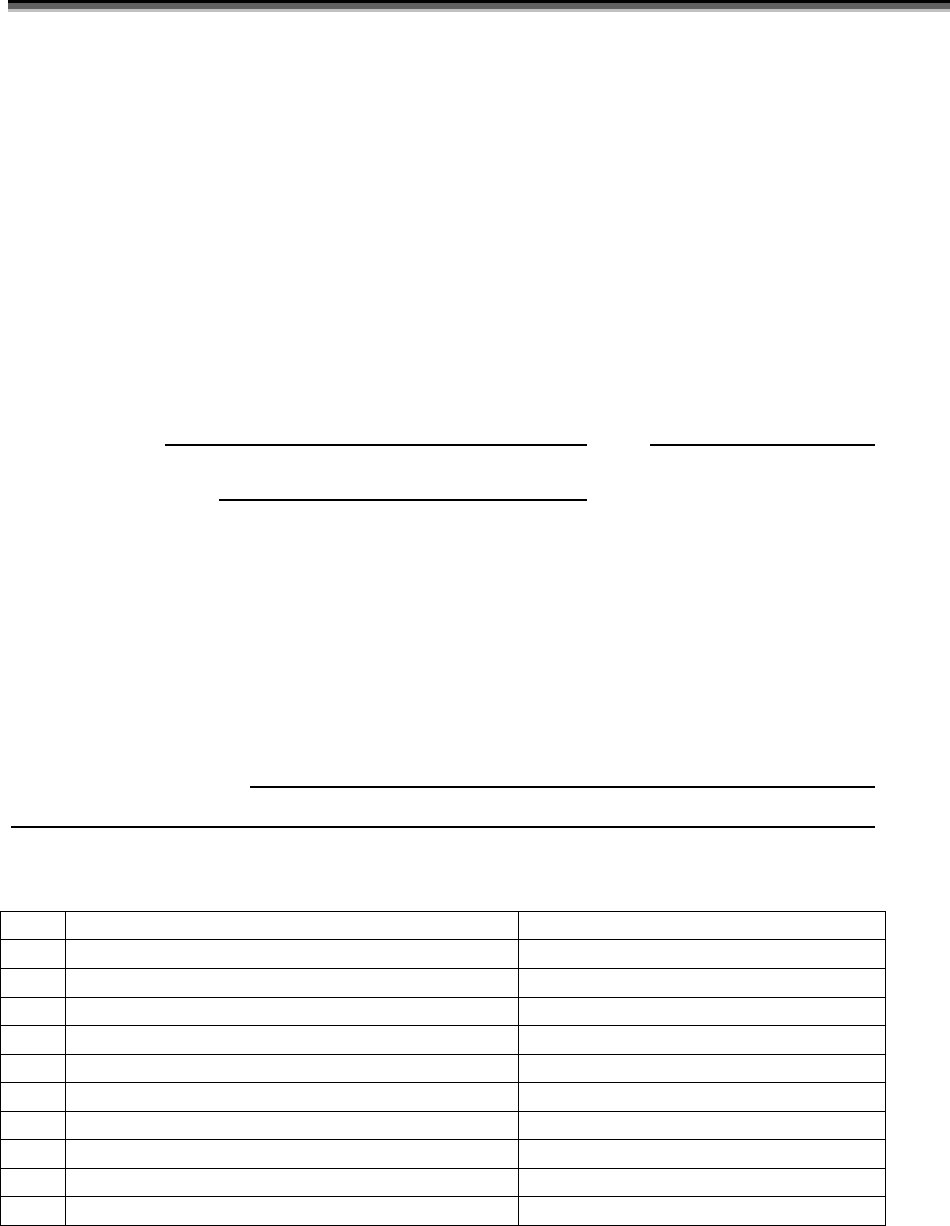
Construction Best Management Practices Plan (CBMPP)
INSERT PROJECT NAME and DATE
CBMPP Template, Version 1.1, September 2009 50
Appendix I – Sample CBMPP Training Log (Optional)
Stormwater Pollution Prevention Training Log
Project Name:
Project Location:
Instructor’s Name(s):
Instructor’s Title(s):
Course Location: Date:
Course Length (hours):
Stormwater Training Topic: (check as appropriate)
Erosion Control BMPs
Emergency Procedures
Sediment Control BMPs
Good Housekeeping BMPs
Non-Stormwater BMPs
Specific Training Objective:
Attendee Roster: (attach additional pages as necessary)
No. Name of Attendee Company
1
2
3
4
5
6
7
8
9
10

Construction Best Management Practices Plan (CBMPP)
INSERT PROJECT NAME and DATE
CBMPP Template, Version 1.1, September 2009 51
Appendix J – Sample Delegation of Authority Form
Delegation of Authority
I, _______________________ (name), hereby designate the person or specifically
described position below to be a duly authorized representative for the purpose of overseeing
compliance with environmental requirements, including ADEM Admin. Code chap. 335-6-12, at
the ____________________________________ construction site. The designee is authorized
to sign any reports, stormwater pollution prevention plans and all other documents required by
the permit.
________________________________________ (name of person or position)
________________________________________ (company)
________________________________________ (address)
________________________________________ (city, state, zip)
________________________________________ (phone)
By signing this authorization, I confirm that I meet the requirements to make such a
designation as set forth in ADEM Admin. Code r. 335-6-6-.09.
I certify under penalty of law that this document and all attachments were prepared
under my direction or supervision in accordance with a system designed to assure that qualified
personnel properly gathered and evaluated the information submitted. Based on my inquiry of
the person or persons who manage the system, or those persons directly responsible for
gathering the information, the information submitted is, to the best of my knowledge and belief,
true, accurate, and complete. I am aware that there are significant penalties for submitting false
information, including the possibility of fine and imprisonment for knowing violations.
Name:
Company:
Title:
Signature:
Date:

Construction Best Management Practices Plan (CBMPP)
INSERT PROJECT NAME and DATE
CBMPP Template, Version 1.1, September 2009 52
Appendix K – Additional Information (i.e., Endangered Species,
Historic Preservation, and U.S. Corps of Engineers
Documentation)
[INSERT ADDITIONAL INFORMATION HERE]
